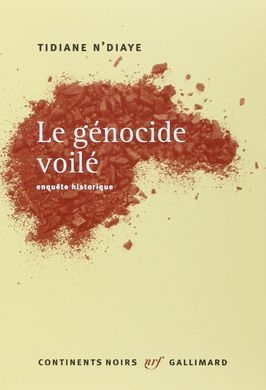Sometime around 118 B.C., a boar-hunting octogenarian cantering through southern Greece suddenly fell off his horse. The sprightly retiree — who ended up succumbing to his injuries — was Polybius, the great historian and chronicler of the Punic Wars. Born into the highest echelons of Greek aristocracy, Polybius lived a life worthy of Odysseus, or perhaps of a toga-clad Forrest Gump. From the rise of Rome as the uncontested hegemon of the Mediterranean to the brutal destruction of Carthage and the final subjugation of the Hellenistic world, he bore direct witness to a series of system-shattering events. His discussion of these epochal shifts, and his soulful reflections on what they might mean for the future of power, order, and international justice, are freighted with insights for our own troubled era.
Polybius was raised in a politically fractured Greece — a land wreathed in the shadows of its former glory, and too consumed with its own bitter rivalries to adequately prepare for the rising Roman challenger across the Ionian Sea. Indeed, one of the most memorable passages of Polybius’ Histories is a speech made by a Greek ambassador at a peace conference in 217 B.C., during which the diplomat pleads in vain with his feuding countrymen to put aside their petty grievances and pay attention to the “clouds that loom in the west to settle on Greece.”
Polybius’ hometown was Megalopolis, the most powerful member of the Achaean confederation, a collection of city-states that had joined forces to counterbalance Macedonian military might. Had Rome’s steady expansion into the Eastern Mediterranean not collided with his own leadership ambitions, the young noble would have enjoyed a highly successful political career. In all likelihood, the political wunderkind would have followed in the footsteps of his father, who had served as strategos — or top elected official — of the Achaean confederation several times throughout the 180s. In 170 B.C., 30-year-old Polybius was elected at the youngest possible age of eligibility to the position of hipparchos, the second highest office in the confederation. While in office, his cautious attempts to preserve Achaean independence by officially supporting Roman war efforts against Perseus of Macedon while tacitly pursuing a policy of passive neutrality ended up backfiring. At the end of the Third Macedonian War (168/167 B.C.) he was accused of anti-Roman conduct and unceremoniously bundled, along with a thousand other Achaeans, onto a ship bound for Italy.
Polybius, however, was no ordinary political detainee. Due to his close friendship with the sons of Aemilius Paullus, the consul who had ground down the Macedonian phalanxes, he was allowed to remain in Rome while most of his fellow Greek prisoners were sent to eke out their existences in dreary backwaters scattered across Italy. It was at the throbbing heart of a youthful empire, hundreds of miles from his ancestral homeland — and in his curiously ambiguous role as both a captive and friend of Rome’s elites — that Polybius began to compose his sprawling, 40-volume history of Rome’s rise to dominance. Of this monumental work, which stretches from the First Punic War in 264 B.C. to the destruction of Corinth in 146 B.C., only five full volumes remain, along with disparate fragments of the remaining sections.
Polybius’ Histories should not only be viewed as a precious repository of information for classicists, but also as required reading for today’s national security managers. Indeed, over the past decade or so, growing apprehensions about China’s rise and America’s relative decline have prompted a surge in the study of the kind of great-power transitions experienced by Polybius. This heightened interest in the tectonics of geopolitical shifts has been accompanied by a singular fixation on the works of Thucydides and on what some political scientists — perhaps somewhat hastily and haphazardly — have termed the Thucydides Trap. Thucydides is in many ways the doyen of strategic history and a seminal figure in the Western canon. His elegant ruminations on war, politics, and the vagaries of human nature brim with world-weary wisdom and penetrating insight. His contemporary popularity amongst political scientists is also no doubt tied to his familiarity, as he remains a recurring character on international relations and security studies syllabi and a well-known figure within the halls of U.S. military academies. Casual familiarity, however, does not always equate with genuine intimacy and unfortunately he is often only cursorily read and understood. This becomes especially apparent whenever the great Athenian historian is invoked by some of the more ideologically-driven analysts and political operatives roaming Washington’s corridors of power.

Furthermore, the U.S. strategic community’s single-minded focus on Thucydides has perhaps obscured the intellectual depth and strategic relevance of some of his illustrious successors’ writings, including those penned by Polybius, a fellow Greek historian-cum-statesman. Indeed, in an era of great-power competition it may well be toward the latter that one should first turn for enduring insights into the prudential virtues of applied history, the insidious dangers of populism, and the challenges inherent to the exercise of primacy.
“Pragmatic History”: Polybius as the Father of Applied History
Polybius began by stating that his primary objective was to chart Rome’s rise to prominence, and to calmly and systematically explain both its drivers and underpinnings:
For who is so worthless and indolent as not to wish to know by what means and under what system of polity the Romans in less than fifty-three years have succeeded in subjecting nearly the whole inhabited world to their sole government—a thing unique in history?
For the Greek noble, this development was unprecedented not only in its scale and rapidity but also in its cross-regional character. Rome’s defeat of Carthage after more than a century of bipolar confrontation had allowed it to focus its vast resources on forcibly drawing Greece into its orbit. In so doing, he argued, the legions had meshed the Western and Eastern Mediterranean together, and subjected the entire civilized world — or oikumene — to their rule. The Roman soldiers fighting under Scipio Africanus at the battle of Zama, Polybius observed, had been fighting for a new form of glory — one that openly associated Rome’s destiny with that of universal empire. The power of this ideal — and its startling physical realization in the course of his lifetime — called for a new historiographical approach: one that viewed things synoptically, and that overrode antiquated geographical representations of the world. It also aimed for a deeper understanding of the connections between domestic political cultures and foreign policy, as well as between effective primacy and prudential leadership. “Previously,” Polybius notes,
The doings of the world had been, so to say, dispersed, as they were held together by no unity of initiative, results or locality; but ever since this date history has been an organic whole, and the affairs of Italy and Libya have been interlinked with those of Greek and Asia, all leading up to one end. (…) Fortune has guided almost all the affairs of the world in one direction, (…) a historian should likewise bring before his readers under one synoptical view the operations by which she has accomplished her general purpose.
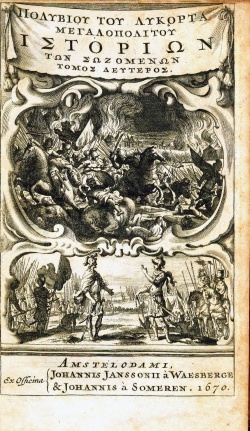 It is this particular intellectual predisposition toward the synoptic, along with its acceptance of nuance, multicausality and complexity, that has rendered Polybius such an appealing figure over the centuries for theorists of statesmanship and grand strategy. Indeed, in his defense of what he termed “pragmatic history” — pragmatike historia — Polybius constantly exhorted his readers to move beyond their pinched disciplinary horizons to attain a sounder understanding of the issues at stake. In one of his more vivid parallels, Polybius compares the student of “isolated histories” to one “who, after having looked at the dissevered limbs of an animal once alive and beautiful, fancies he has been as good as an eyewitness of the creature itself in all its action and grace.” “One can get some idea of a whole from a part,” he adds, “but never knowledge or exact opinion.” Any accurate survey, he added, should involve an “interweaving” (symploke) of “all particulars, in their resemblances and differences.” In this, the reader is reminded of Sir Francis Bacon’s playful division of men of learning into various insect categories: ants, spiders, and bees—a taxonomy the Englishman laid out in the following terms:
It is this particular intellectual predisposition toward the synoptic, along with its acceptance of nuance, multicausality and complexity, that has rendered Polybius such an appealing figure over the centuries for theorists of statesmanship and grand strategy. Indeed, in his defense of what he termed “pragmatic history” — pragmatike historia — Polybius constantly exhorted his readers to move beyond their pinched disciplinary horizons to attain a sounder understanding of the issues at stake. In one of his more vivid parallels, Polybius compares the student of “isolated histories” to one “who, after having looked at the dissevered limbs of an animal once alive and beautiful, fancies he has been as good as an eyewitness of the creature itself in all its action and grace.” “One can get some idea of a whole from a part,” he adds, “but never knowledge or exact opinion.” Any accurate survey, he added, should involve an “interweaving” (symploke) of “all particulars, in their resemblances and differences.” In this, the reader is reminded of Sir Francis Bacon’s playful division of men of learning into various insect categories: ants, spiders, and bees—a taxonomy the Englishman laid out in the following terms:
The men of experiment are like the ant, they only collect and use, the reasoners resemble spiders, who make cobwebs out of their own substance. But the bee takes a middle course; it gathers its material from the flowers of the garden and of the field, but transforms and digests it by a power of its own.
Polybius was clearly arguing in favor of a historiographical approach akin to that of the cross-pollinating bee — one that widely absorbs multiple external sources of information, skillfully synthesizes that same information, and then seeks to infer connections by drawing on well-honed analytical abilities. Possessing such historically informed knowledge, along with a capacity for intellectual cross-pollination was, according to the Achaean, essential to statesmanship. Indeed, Polybius not only makes it evident from the get-go that his Histories are geared toward the policymaker, he also argues that a grounding in history is a prerequisite for political leadership.
In this the Greek historian was not wholly original. In periods of great-power flux, thinkers have traditionally glanced nervously over their shoulder, to scry past patterns of state behavior. For statesmen grappling with the uncertainty of their specific circumstances the “process of liaising between the universal and the particular has often been conceptualized in terms of a temporal process,” with the hope that the lessons of yesteryear hold the promise of better ascertaining future outcomes. Where Polybius stands out from his predecessors and contemporaries is in his dogged insistence on what is required of a true historian. Indeed, according to the Achaean, the scholar must also be something of an Indiana Jones-like figure — a man of action with a taste for travel, adventure, and preferably a firsthand experience in the handling of affairs of state.
Polybius, one classicist notes, “for the most part lived up to the high standards he set himself.” Not only did he crisscross the Mediterranean, traipsing across battle sites, decoding faded inscriptions, and interviewing eyewitnesses, he also bore witness to key events, such as the Roman destruction of Carthage in the company of Scipio Aemilianus. According to one account, the warrior-scholar (by then in his mid-fifties) even joined a Roman testudo, or shielded formation, in the storming of a Carthaginian position. Finally given permission to return to his homeland in 150 B.C., Polybius then played an important diplomatic role, assisting in the Roman reconstruction and settlement of Greece. Indeed, centuries later travelers such as Pausanias reported seeing monuments in Greece thanking the historian for having “mitigated Roman wrath against Greece.”
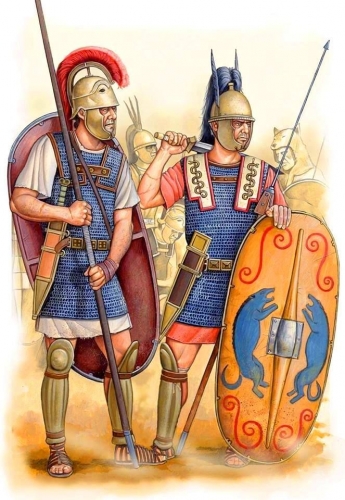
The Tocqueville of Republican Rome?
It is the hybrid quality of Polybius’s experience — both as an individual subjected to hegemonic domination, and as an intimate of that same hegemon’s national security establishment — that renders his observations on Roman foreign policy so fascinating. His Histories are marked by a certain distance intérieure — and a dispassionate yet keen-eyed attention for detail — one that brings to mind other, more recent studies of emerging powers penned by shrewd outsiders, such as Alexis de Tocqueville’s Democracy in America. In some ways, Polybius fits within a broader tradition in Greco-Roman antiquity that associated great historical work with displacement and exile. In his essay De Exilo, Plutarch memorably drew attention to such a link, observing, “that the Muses as it appears, called exile to their aid in perfecting for the ancients the finest and most esteemed of their writings.” After all, Herodotus and Xenophon had both experienced the trauma of exile, and Thucydides famously confessed that his long years away from Athens “free from distractions” had allowed him to attain a greater degree of objectivity and clarity. Edward Said, in his commentary on the figure of the intellectual in exile, notes that such an individual can be compared to
a shipwrecked person who learns to live in a certain sense with the land, not on it, not like Robinson Crusoe, whose goal is to colonize his little island, but more like Marco Polo, whose sense of the marvelous never fails him, and who is always a traveler, a provisional guest, not a freeloader, conqueror, or raider. Because the exile sees things in terms both of what has been left behind, and what is actual here or now, there is a double perspective that never sees things in isolation.
Polybius’ own shipwrecked condition may have allowed him to reach conclusions about Rome’s strategic culture and trajectory that would have eluded other, more rooted, observers. It also meant that he was obliged to traverse the treacherous reefs of Rome’s culture wars, in a high society that entertained a bizarre, schizoid relationship with Greek culture. This was an era, after all, when leading politicians such as Cato openly associated Hellenism with sexual prurience, social decadence, and political disorder — all while seeking instruction from Athenian savants, admiring Thucydides, and quoting Homer. The historian was therefore required to walk something of a literary tightrope: providing an unvarnished assessment of the new hegemon’s strategic performance for the benefit of his fellow Greeks, yet taking care not to unduly alienate his Roman hosts and captors. There are certainly moments when the political detainee opts for circumspection over candor. For instance, when broaching the issue of the final destruction of Carthage — an event which sent ripples across the Mediterranean — Polybius avoids taking a clear position on the strategic necessity of such a radically punitive action.
All in all, however, one cannot help but be impressed by the dexterity with which he pulls off this intellectual balancing act. Although the Greek historian clearly admired Rome’s patriotic vigor and military prowess, along with aspects of its politeia, or socio-political structure, he was also unabashedly critical of what he perceived as early signs of Roman imperial overreach and hubris in the conduct of their “universal domination.” As University of Toronto professor Ryan Balot notes, Polybius was “no political anthropologist,” and his “account was far from value neutral.” Instead, he
offered a careful ethical appraisal of Rome’s domestic and foreign politics, with a view both to praising the Romans for their virtues and to criticizing the Romans’ excesses and self-destructive tendencies. His critique (…) was ameliorative. He posed his ethical challenges to the Romans with a deeper educational intention in mind, namely, to challenge the Romans’ self-destructive tendencies to behave harshly, arrogantly, and overconfidently.
Anacylosis and the Question of Hegemonic Decline
Like most Greco-Roman thinkers prior to the advent of teleological Christianity, Polybius understood time as more circular than linear. Drawing on an organicist vision of politics that can be traced back to the pre-Socratic age, Polybius argued that nations were ensnared within a quasi-biological cycle of growth and degeneration from which there can be no escape. There are two agencies “by which every state is liable to decay,” he explained, “the one external and the other a growth of the state itself.” There could be no “fixed rule about the former,” but the latter was a “regular process.” This process, which Polybius terms anacylosis, occurs as a polis’ system of government rotates through three separate conditions — monarchy, aristocracy, and democracy — each of which conceals, like a sinister larval parasite, its corrupted form.
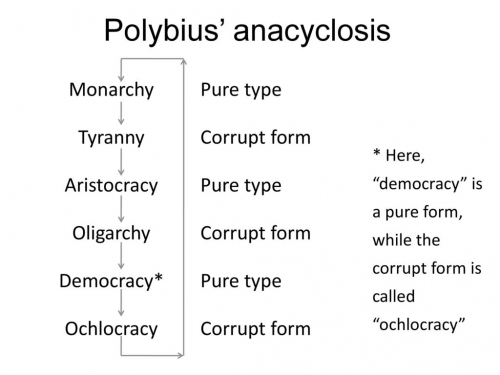
Monarchy usually devolved into tyranny, aristocracy into oligarchy, and democracy — the most dangerous system of all — inevitably collapsed into what Polybius called ochlocracy, i.e. mob (ochlos) rule. In an ochlocracy, the people are governed by thumos (passion, wrath, and the desire for recognition), rather than logimos (reason), and inevitably end up turning to a monarch in a desperate quest for order, thus setting off the cycle once more. In one of the more remarkable passages of the Histories, the Achaean compares the masses to an ocean, whose seemingly calm surface could, in the space of an instant, be whipped up by a ruthless demagogue into a raging tempest.
Such politically destructive storms could not be avoided, but they could be delayed. Famously, Polybius attributed Rome’s successful forestalling of anacylosis to its institutions, and to its “mixed constitution.” The Roman politeia, which combined elements of all three systems of government — democracy in the form of elections, aristocracy in the form of the senatorial class, and monarchic in the form of the considerable powers granted to consuls — maintained a state of delicate equilibrium, “like a well-trimmed boat.”
For Polybius, great-power competition was fundamentally a two-level game, and Rome’s imperial success was directly linked to the solidity of its internal political arrangement. The First Punic War, he suggested, lasted for so long (23 years) because both Rome and Carthage were “at this period still uncorrupted in principle, moderate in fortune, and equal in strength.” By the time of the Hannibalic War or Second Punic War, however, the Carthaginian system had begun to degenerate, until finally it had succumbed to the corrosive political forces which affect all empires. Polybius stresses the strategic importance of time — or of windows of opportunity — in bouts of protracted competition. One of the reasons Rome prevailed, he suggests, was because even though it may have been equal to Carthage at the outset of the competition, it was on an ascending curve, while Carthage’s power trajectory had begun to trend downward.
The power and prosperity of Carthage had developed far earlier than that of Rome, and in proportion to this her strength had begun to decline, while that of Rome was at its height, at least so far as her system of government was concerned.
Rome’s social cohesiveness and political stability had provided it with the necessary reservoirs of resilience to weather its enormous losses during the Second Punic War, as well as a series of crushing defeats. Patriotic unity in the face of misfortune, Polybius argued, was preserved through the shared memory of “the discipline of many struggles and troubles,” and by the “light of experience gained in disaster.” Indeed, some of the more interesting passages in the Histories deal with collective memory, and with the dangers of strategic amnesia. For Polybius, it was only when a state’s elites had a clear memory of past sacrifices, and of the efforts that had led to the construction of a political order, that they were capable of mustering the will to act in defense of that same order. The rapidity with which such recollections of the fragility of order and peace seemed to dissipate depressed Polybius, and — in his opinion — rendered anacylosis grimly ineluctable.
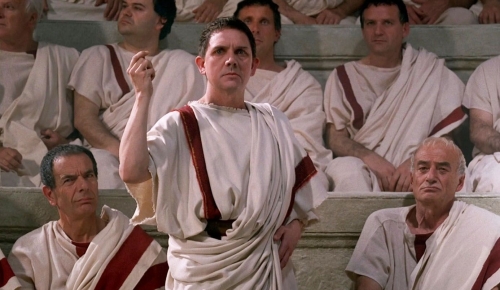
The robustness of Rome’s politeia, Polybius argued, was in part tied to its citizens’ recognition of the importance of strong, shared civic traditions in arresting the process of memorial entropy that inevitably leads to disunity and decline. The Greek historian comments approvingly on the various festivals, rites, and traditions designed to inculcate in every Roman the virtues of self-sacrifice, along with a healthy love of the state. He appeared particularly taken with the Roman aristocratic funeral, elaborately staged events featuring ancestor masks, long narrations of the martial exploits of the deceased and his forebears, and a great deal of pomp and circumstance. “There could not easily be a more ennobling spectacle for a young man who aspires to fame and virtue,” he enthuses, positing that by this means future generations are inspired to remember past struggles and continuously strive toward self-sacrifice and glory in the service of Rome.
Like many ancient historians, Polybius believed in the power of education through example, and through the actions of a set of paradigmatic figures. The most memorable characters in the Histories are thus paragons of prudence and virtue, men who retain a strong awareness of the fickleness of tyche, or fortune, and whose actions are guided by moderation and empathy. One such example would be Aemilius Paullus, who in a speech following his triumph over the Macedonian King Perseus, exhorts his Roman comrades to learn from their experience:
“It is chiefly,” he said, “at these moments when we ourselves or our country are most successful that we should reflect on the opposite extremity of fortune; for only thus, and then with difficulty, shall we prove moderate in the season of prosperity.”
“The difference,” he said, “between foolish and wise men lies in this, that the former are schooled by their misfortunes and the latter by those of others.”
In another remarkably cinematic moment, Polybius recounts standing next to Scipio Aemilianus during the burning of Carthage. Moved to tears by the scene, Scipio purportedly whispered Homeric verses, quoting Hector predicting the destruction of Troy. Another version of the scene has the Roman general grasping his friend’s hands, and mentioning his “dread foreboding” that one day the same doom would be visited on his own country. “It would be difficult to mention an utterance more statesmanlike and more profound,” gushes Polybius. For the Greek historian, Roman primacy could only be preserved if its security managers preserved — through the medium of applied history and moral exemplars — such a sense of prudence and empathy, along with an alertness to the capriciousness of fortune, which, to quote Hannibal in the Histories, “by a slight turn in the scale” can bring about geopolitical “changes of the greatest moment as if she were sporting with little children.” Driving this lesson home, darker, more cautionary tales are proffered in the form of the vainglorious fallen — tragic figures such as Philip V of Macedon who, despite being initially viewed as “the darling of the whole of Greece,” gradually succumbs to his more irascible impulses, morphing into a sanguinary despot with a taste for “human blood and the slaughter and betrayal of his allies.”
Hubris and Imperial Overreach
Polybius’ reflections on Roman imperialism are tinged with the same melancholy that suffuse his discussion of domestic political systems. Indeed, for the Achaean, hubris erupts when a nation’s foreign policy begins to suffer from the same maladies that afflict its domestic system of government — i.e. moral degeneration and strategic amnesia. Polybius was also remarkably forthright in his discussion of the tenuousness of “total victory” — particularly in insurgency-prone regions. Commenting on the Carthaginians’ mismanagement of their territories in Spain, he pointedly remarks that
while success in policy and victory in the field are great things, it requires much more skill and caution to make a good use of such success (…) they [the Carthaginians] had not learnt that those who preserve their supremacy best are those who adhere to the same principles by which they originally established it.
When a nation’s foreign policy is unmoored from its founding principles, or — worse still — reflects the pathologies of its own domestic dysfunction, a sudden, swift reversal in geopolitical fortune is likely to follow. As the classicist Arthur Eckstein notes, many of the historian’s predecessors and contemporaries shared this pessimistic view of the corrupting effects of power. Where Polybius differs somewhat is in the urgency of his tone and in his desire that “his audience be aware of this corrupting trend, and fight against it.”
Throughout the Histories, Polybius reminds his Roman readership — sometimes subtly, sometimes not so subtly — that primacy can only endure if it appears more benevolent, just, and conducive to prosperity than the system or lack of system that preceded it. A Roman foreign policy that operated at a disjuncture from the very virtues that had enabled the Italian city-state to attain its hegemonic position would only nurture resentment, for “it is by kind treatment of their neighbors and by holding out the prospect of further benefits that men acquire power.” Wise hegemons should not engage in overly punitive military policies, for “good men should not make war on wrongdoers with the object of destroying or exterminating them, but with that of correcting and reforming their errors.”

As Polybius contemplated the future of Roman imperial rule, his reflections began to appear more pessimistic. Noble figures such as Scipio Africanus and Scipio Aemilianus, with their ancient military virtue and humble acceptance of the role of contingency, are depicted as the granite-faced avatars of a dying era. Polybius frequently alludes to the fact that with Rome’s expansion, financial corruption, bureaucratic indolence, and strategic complacency have become endemic. He gives various examples of Roman boorishness and cultural insensitivity. One such anecdote involves a Roman diplomat sent to mediate a dispute between a Greek Seleucid king and Ptolemaic Egypt. Without giving the Greek monarch any time to deliberate with his advisers, the Roman envoy traces a circle in the sand and orders the king to give an answer before setting foot outside the circle. This action, Polybius notes, was “offensive and exceedingly arrogant.” The Achaean is also bluntly critical of the Roman decision, following the seizure of Syracuse in 212 B.C., to denude the city of all its art and riches, observing that it would only stoke the resentment of the despoiled and was therefore strategically shortsighted in addition to immoral. Perhaps most significantly, the surviving fragments of the Histories end with the ominous image of Polybius watching a gaggle of braying Roman legionaries roll dice across priceless works of art, torn from the smoking ruins of Corinth.
The Enduring Relevance of Polybius
It is unfortunate that Polybius is not as widely read as he once was. Part of the problem may be that he is not the most accessible of historians. Indeed, scholars have long griped about the dryness of his prose, which is bare of the stylistic embellishments and rhetorical adornments so characteristic of other classical writers. Ancient critics scoffed that Polybius’ Histories were one of the major works that socialites liked to display on their bookshelves but never actually read in their entirety, while the great classicist Arnaldo Momigliano — in a rather waspish turn of phrase — quipped that Polybius “wrote as badly as the professors who studied him.”
Notwithstanding these stylistic critiques, there is evidence that in reality Polybius exerted an enormous influence over successive generations of thinkers. First in the classical era, with towering figures such as Cicero and Livy praising Polybius as “a particularly fine author,” and “an author who deserves great respect,” then following his eventual rediscovery in fifteenth-century Florence after centuries of obscurity. Indeed, the adventurous academic’s painstaking descriptions of Roman military modernization and politics were an object of fascination during the Renaissance and early Baroque eras. Machiavelli, in particular, was captivated by Polybius’ theories, as was the great sixteenth-century neostoic Justus Lipsius, who called for the reorganization of modern armies along the lines of the Roman legions portrayed in the Histories. Polybius’ ideas on the virtues of a mixed constitution also shaped Enlightenment ideals, influencing luminaries ranging from Montesquieu to the Founding Fathers of the United States, while saturnine Victorians chewed over his concept of anacylosis as they debated the extent and duration of British imperial primacy.
What relevance do the Histories have for our own interstitial age? Can the Greek historian’s views on the conduct of geopolitical analysis help us refine our ability to engage with complexity and develop more thoughtful approaches to emerging challenges? And how can Polybian insights be applied to the present condition, as the United States grapples with growing domestic disunity, the rise of populism, and its own relative decline?
Embracing the Polybian Mode of Inquiry in the Study of Foreign Relations
Polybius took a multidisciplinary intellectual approach to the study of international affairs, and sought — like most effective grand strategists — to detect patterns across time, space, and scale. In this, he was also a product of his times. Indeed, ancient Greek culture distinguished between different modes of knowledge, and between speculative reason and practical wisdom. As Aristotle observes in his Nichomachean Ethics, the sphere of political action was one of ambiguity, inconstancy and variety — one that necessitated its own form of intelligence or “practical wisdom”: whereas “scientific knowledge is demonstrable, skill and practical wisdom are concerned with what is otherwise.” Geopolitics is a fundamentally human endeavor, ill-suited to the positivist, quantitative approaches now increasingly prevalent within the American social sciences. Polybius would no doubt be alarmed that in so many quarters (albeit thankfully not all) scholarly rigor has also come to be associated with universal models and parsimonious theories — rigid schema that seek to redefine the “cloudlike subject of [international] politics as the object of a clocklike science.” At a time when the field of applied history appears caught in a grim death spiral of its own, Polybius’ Histories serve as a powerful reminder of its prudential value — not only in terms of understanding the past, but also as a means of preparing for the onslaughts of Tyche — or Fortune, that most fickle of goddesses. As University of Edinburgh professor Robert Crowcroft rightly notes, “if one makes a claim to expertise in cause and effect, one should be trained to discern patterns and project trends forward.” A training in applied history can allow for greater intellectual agility, including with regard to the framing and conceptualization of epoch-spanning and cross-regional trends. Were he alive today, Polybius would most likely second the call, originating in Australia, to recast our collective mental map of the Asia-Pacific by referring to it as the Indo-Pacific. Indeed, the Indian and Pacific oceans now form part of a larger strategic continuum for U.S. defense planners, just as the Eastern and Western halves of the Mediterranean merged into one geopolitical space in the course of the Greek historian’s lifetime.
Great Power Competition Is a Competition Between Domestic Systems
Another of Polybius’s major insights is that any protracted bipolar struggle will likely constitute a death match between two domestic political systems. The Rome-Carthage rivalry was a grueling conflict of attrition that severely taxed the resources, morale, and alliance structures of both states. While Rome’s military efficiency and capacity for innovation played a major role in its final victory, Polybius argues that its institutional solidity and sense of societal cohesiveness played an equally significant part. As the United States seeks to restructure its grand strategy around the concept of great power competition, it must remain mindful of the need to strengthen its economic and societal foundations at home, by striving to remain a beacon of openness, freedom, and innovation. Equally important will be uniting the American people around a revived sense of shared destiny via a renewed emphasis on civics, national history, and a political discourse that privileges unity of purpose over the narcissism of small differences.
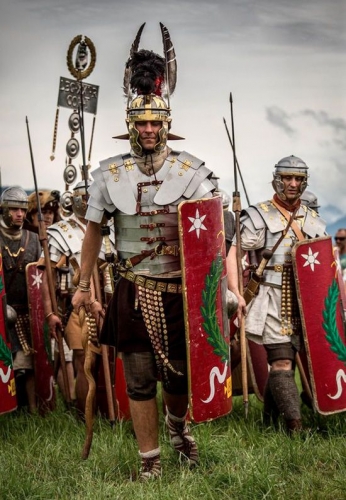
International Order and the Perils of Strategic Amnesia
Indeed, Polybius also reminds us of the dangers inherent to a foreign policy unmoored from its nation’s founding principles. The current U.S. president’s disavowal of some of these core tenets — the American Republic’s creedal nature and its basis in civic rather than cultural nationalism — has fueled fears of an eventual renunciation of Washington’s international mission. Both are, after all, closely linked. America’s unique sense of political community has historically underpinned its postwar internationalism and sense of “ethical egoism.” It has also furnished the ideational cement for its alliances with like-minded democratic powers, and the spiritual foundations of its refusal to let authoritarian powers carve out exclusionary spheres of influence. While some of the current debates surrounding the concept of a liberal international order may occasionally seem somewhat circular and tedious — especially for foreign observers troubled by the rise of authoritarian actors, and mindful of the overall benefits of American leadership — their intensity does also serve a useful purpose. Indeed, by taking aim at some of the more rosy-hued preconceptions of the American strategic community, these critiques force the order’s champions to return to first principles — and subsequently present a more balanced, thoughtful, and accessible defense of the virtues of American primacy to their fellow citizens and allies. Indeed, according to Polybius, one of the main accelerants of decline is a nation’s tendency toward collective amnesia, and its denizens’ tendency, after barely a few generations, to forget the struggles and sacrifices that led to their dominance of the international system in the first place. By refocusing public attention on the conditions under which postwar statesmen labored to structure various aspects of the extant order, strategic commentators can help build a more considered, and less reflexive, base of support for American internationalism and leadership.
Prudence and Humility Buttress Primacy in an Era of Relative Decline
Last but not least, American primacy can only be preserved if it continues to appear more appealing than various structural alternatives, ranging from competitive multipolarity to a world divided by a twenty-first century concert of nations, or segmented into spheres of influence. In an era characterized by a decline in U.S. relative power, this will require a novel approach, one characterized by greater prudence and humility, and laser-focused on the cultivation and preservation of alliances. If Rome prevailed in its system-wide competition, Polybius suggests, it was also because, by and large, it appeared to offer smaller Mediterranean polities a more attractive and less coercive international order than that proposed by Carthage. The Polybian emphasis on strategic empathy and respectful diplomacy could prove instructive for current and future U.S. administrations as they seek to enroll the help of other, less powerful states in their global competitive strategy against authoritarian behemoths. Polybius’ own colorful life — as a Greek observer of Rome’s rise — also serves as a demonstration of the virtues of travel, multilingualism, and deep-rooted cultural awareness when conducting strategic assessments of both allies and adversaries.
It also suggests that foreign friends of hegemons, by remaining at a certain critical distance, can prove useful and are occasionally worth listening to. This has, of course, been a conceit of Europeans — and of the British in particular — ever since America’s rise to international prominence and Prime Minister Harold Macmillan’s condescending remark that London should play Greece to Washington’s Rome. Such notions have often been breezily dismissed by self-assured American statesmen and commentators — much as Virgil in the Aeneid dismissively contrasted the airy, intellectual Greeks to the vigorous, conquering Romans. Nevertheless, in this day and age, the defense of the existent order can no longer be a disproportionately American endeavor. Without greater unity and a shared sense of urgency, the world’s community of democracies may well end up like the squabbling Greek states at the beginning of Polybius’ Histories: mere shadows of their former glory, relegated to the sidelines of history as another great power — this time located to the East — forcibly takes the reins of the international system.
Iskander Rehman is a Senior Fellow at the Pell Center for International Relations and Public Policy, and an Adjunct Senior Fellow at the Center for a New American Security. He holds a PhD in Political Science with distinction from the Institute of Political Studies in Paris (Sciences Po) and is a contributing editor at War on the Rocks. He can be followed on Twitter at @IskanderRehman
 Déjà biographe de Louis-Philippe d’Orléans et de Philippe Séguin, véritable faux héros porté au pinacle par d’indécrottables droitards qui fit perdre en 1992 le non à Maastricht parce qu’il ne voulait pas heurté un François Mitterrand au sommet de sa ruse florentine, Arnaud Teyssier ne partage pas l’analyse convenue de la lassitude politique. Il insiste au contraire sur les dernières années d’un second mandat marqué par des coups d’éclat retentissants (retrait de l’OTAN en 1966, discours d’autodétermination à Phnom Penh en 1967, condamnation la même année de l’État d’Israël après la guerre-éclair des Six Jours, reconnaissance du combat canadien-français à Montréal). De Gaulle prend « la défense des identités nationales et des cultures face au grand nivellement qui s’annonce (p. 66) ». Son interprétation rejoint celle d’Anne et de Pierre Rouannet qui dans Les trois derniers chagrins du Général de Gaulle (Grasset, 1980) et dans L’inquiétude outre-mort du Général de Gaulle (Grasset, 1985) traitaient déjà de ces thèmes d’un point de vue original et pertinent.
Déjà biographe de Louis-Philippe d’Orléans et de Philippe Séguin, véritable faux héros porté au pinacle par d’indécrottables droitards qui fit perdre en 1992 le non à Maastricht parce qu’il ne voulait pas heurté un François Mitterrand au sommet de sa ruse florentine, Arnaud Teyssier ne partage pas l’analyse convenue de la lassitude politique. Il insiste au contraire sur les dernières années d’un second mandat marqué par des coups d’éclat retentissants (retrait de l’OTAN en 1966, discours d’autodétermination à Phnom Penh en 1967, condamnation la même année de l’État d’Israël après la guerre-éclair des Six Jours, reconnaissance du combat canadien-français à Montréal). De Gaulle prend « la défense des identités nationales et des cultures face au grand nivellement qui s’annonce (p. 66) ». Son interprétation rejoint celle d’Anne et de Pierre Rouannet qui dans Les trois derniers chagrins du Général de Gaulle (Grasset, 1980) et dans L’inquiétude outre-mort du Général de Gaulle (Grasset, 1985) traitaient déjà de ces thèmes d’un point de vue original et pertinent. Charles De Gaulle considère la participation comme l’élément décisif pour lier durablement le travail et le capital, association déjà revendiquée à l’époque « populiste » du RPF (Rassemblement du peuple français). Par participation, il entend « une forme de révolution dans l’exercice des décisions au sein des universités, au sein de l’entreprise, dans les régions. Il reconnaît implicitement que les mécanismes traditionnels de la démocratie représentative ne sont plus suffisants pour faire face au monde nouveau qui se profile (p. 85) ». En effet, « au-delà de son caractère singulier et déroutant, [Charles De Gaulle] représente à la perfection le modèle de l’homme d’État français qui dépasse, sans l’abolir, l’opposition traditionnelle entre droite et gauche et met au rebut le faux débat de la pensée contemporaine qui s’est développé en France autour du “ libéralisme ” et de l’« élitisme », ou du jacobinisme et de l’esprit girondin. Sa conception sacerdotale du gouvernement et de la chose publique défie toute idée préconçue (p. 20) ». Les années 1960 marquent l’apothéose du « libéralisme gaullien ». « Il s’agit d’un libéralisme “ national ”, ou d’un libéralisme d’État, car il s’inscrit dans une gestion de l’économie très largement dirigée, où la planification est l’élément stratégique pour les politiques industrielles (p. 81). » On est donc très loin de la participation imaginée comme une manière biaisée d’implanter des soviets dans toute la société.
Charles De Gaulle considère la participation comme l’élément décisif pour lier durablement le travail et le capital, association déjà revendiquée à l’époque « populiste » du RPF (Rassemblement du peuple français). Par participation, il entend « une forme de révolution dans l’exercice des décisions au sein des universités, au sein de l’entreprise, dans les régions. Il reconnaît implicitement que les mécanismes traditionnels de la démocratie représentative ne sont plus suffisants pour faire face au monde nouveau qui se profile (p. 85) ». En effet, « au-delà de son caractère singulier et déroutant, [Charles De Gaulle] représente à la perfection le modèle de l’homme d’État français qui dépasse, sans l’abolir, l’opposition traditionnelle entre droite et gauche et met au rebut le faux débat de la pensée contemporaine qui s’est développé en France autour du “ libéralisme ” et de l’« élitisme », ou du jacobinisme et de l’esprit girondin. Sa conception sacerdotale du gouvernement et de la chose publique défie toute idée préconçue (p. 20) ». Les années 1960 marquent l’apothéose du « libéralisme gaullien ». « Il s’agit d’un libéralisme “ national ”, ou d’un libéralisme d’État, car il s’inscrit dans une gestion de l’économie très largement dirigée, où la planification est l’élément stratégique pour les politiques industrielles (p. 81). » On est donc très loin de la participation imaginée comme une manière biaisée d’implanter des soviets dans toute la société. Dans cette perspective de téléologie politique, l’auteur met fort intelligemment en relation l’action de Charles De Gaulle et l’œuvre, en particulier théâtrale, de Henry de Montherlant. Il aurait pu aussi citer une anecdote donnée par Philippe de Saint-Robert. En attendant un essai nucléaire au large de Mururoa vers 1967 – 1968, le Général lisait dans sa cabine Le Chaos et la Nuit ! Cependant, personnalité « montherlaine », « peut-on dire que de Gaulle était une figure “ schmittienne ” ? (p. 271) » Arnaud Teyssier s’avance ici un peu trop vite quand il souligne que le gaulliste de gauche et professeur de droit constitutionnel, un temps enseignant à l’Université de Strasbourg, « René Capitant, qui fut l’une des personnalités les plus proches de De Gaulle, était un admirateur et un ami de Carl Schmitt (p. 272) ».
Dans cette perspective de téléologie politique, l’auteur met fort intelligemment en relation l’action de Charles De Gaulle et l’œuvre, en particulier théâtrale, de Henry de Montherlant. Il aurait pu aussi citer une anecdote donnée par Philippe de Saint-Robert. En attendant un essai nucléaire au large de Mururoa vers 1967 – 1968, le Général lisait dans sa cabine Le Chaos et la Nuit ! Cependant, personnalité « montherlaine », « peut-on dire que de Gaulle était une figure “ schmittienne ” ? (p. 271) » Arnaud Teyssier s’avance ici un peu trop vite quand il souligne que le gaulliste de gauche et professeur de droit constitutionnel, un temps enseignant à l’Université de Strasbourg, « René Capitant, qui fut l’une des personnalités les plus proches de De Gaulle, était un admirateur et un ami de Carl Schmitt (p. 272) ».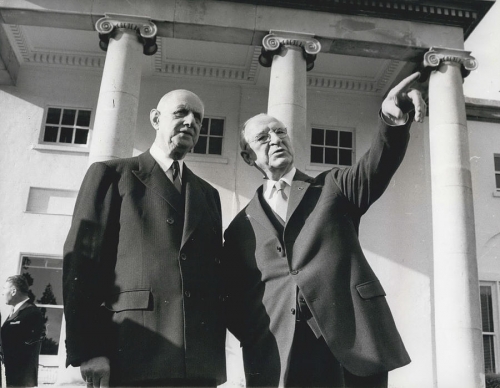


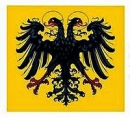


 del.icio.us
del.icio.us
 Digg
Digg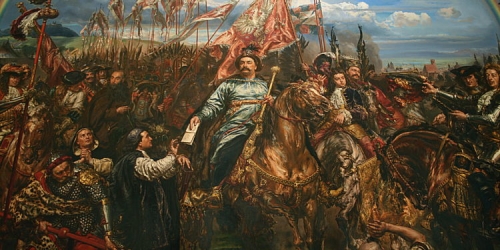

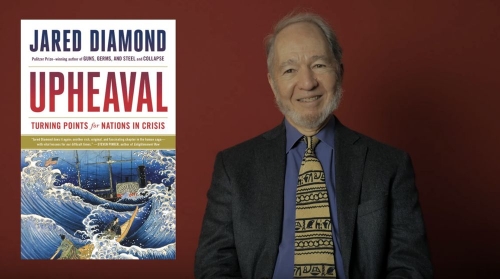
 Jared Diamond is phoning it in. The legendary author of Guns, Germs, and Steel—the epic 1997 account of how Earth’s geography helped to determine the fates of the peoples who inhabit it—has produced a genuine mess of a book.
Jared Diamond is phoning it in. The legendary author of Guns, Germs, and Steel—the epic 1997 account of how Earth’s geography helped to determine the fates of the peoples who inhabit it—has produced a genuine mess of a book.
 Les principaux manuels de géopolitiques, notamment celui que le Professeur David Criekemans a rédigé selon les critères de la plus haute scientificité dans le cadre de l’Université de Louvain, commencent presque toujours par une histoire de cette discipline depuis les premières tentatives de saisir conceptuellement les faits géographiques, non pas tant dans une perspective purement empirique mais surtout dans une perspective stratégique, notamment à l’aide de la cartographie établie par Carl Ritter, de l’anthropo-géographie de Ratzel ou des définitions données par le Suédois Rudolf Kjellén. C’est, personne ne le niera, un travail des plus utiles, ce qui était aussi mon intention lorsque feu le Professeur Jean-François Mattéi m’avait invité à présenter les penseurs de la géopolitique dans sa remarquable Encyclopédie des Œuvres philosophiques entre 1990 et 1992, encyclopédie qui fut ultérieurement publiée aux Presses Universitaires de France. L’intention du Prof. Mattéi correspondait à celle qu’avait déjà formulée le géopolitologue Yves Lacoste, à savoir élargir le cadre de la discipline, philosophique pour le premier, géographique/géopolitique pour le second. Mattéi voulait donc élargir le champ de la philosophie, tout simplement parce que plus aucune philosophie sérieuse ne peut encore être pensée sans tenir compte du temps et de l’espace, de l’émergence de tous les phénomènes, faits, modes de pensée et aspirations religieuses ou éthiques qui, tous, nécessairement, se déploient en des lieux et des périodes précises qu’ils influencent ensuite en profondeur, les inscrivant dans la durée et leur assurant une résilience difficilement éradicable.
Les principaux manuels de géopolitiques, notamment celui que le Professeur David Criekemans a rédigé selon les critères de la plus haute scientificité dans le cadre de l’Université de Louvain, commencent presque toujours par une histoire de cette discipline depuis les premières tentatives de saisir conceptuellement les faits géographiques, non pas tant dans une perspective purement empirique mais surtout dans une perspective stratégique, notamment à l’aide de la cartographie établie par Carl Ritter, de l’anthropo-géographie de Ratzel ou des définitions données par le Suédois Rudolf Kjellén. C’est, personne ne le niera, un travail des plus utiles, ce qui était aussi mon intention lorsque feu le Professeur Jean-François Mattéi m’avait invité à présenter les penseurs de la géopolitique dans sa remarquable Encyclopédie des Œuvres philosophiques entre 1990 et 1992, encyclopédie qui fut ultérieurement publiée aux Presses Universitaires de France. L’intention du Prof. Mattéi correspondait à celle qu’avait déjà formulée le géopolitologue Yves Lacoste, à savoir élargir le cadre de la discipline, philosophique pour le premier, géographique/géopolitique pour le second. Mattéi voulait donc élargir le champ de la philosophie, tout simplement parce que plus aucune philosophie sérieuse ne peut encore être pensée sans tenir compte du temps et de l’espace, de l’émergence de tous les phénomènes, faits, modes de pensée et aspirations religieuses ou éthiques qui, tous, nécessairement, se déploient en des lieux et des périodes précises qu’ils influencent ensuite en profondeur, les inscrivant dans la durée et leur assurant une résilience difficilement éradicable. Lacoste a prouvé que la géographie sert les chefs de guerre en démontrant que les premières tentatives de dessiner des cartes dans la Chine de l’antiquité servaient à indiquer les voies à suivre aux chefs de guerre, de manière à ce qu’ils puissent mouvoir leurs armées de manière optimale dans les paysages et terrains divers de leur propre pays ou dans le pays de l’ennemi. Ensuite, dans un livre succinct, mais rédigé de manière magistrale, il nous a montré que le Prince Henri du Portugal, Anglais par sa mère, a fondé et soutenu son « école de la mer » afin de trouver de nouvelles voies maritimes extra-méditerranéennes pour que l’écoumène chrétien/européen de son époque puisse trouver le chemin vers les épices indiennes et vers le mystérieux « Cathay » en échappant aux blocus terrestres et maritimes que lui imposait le contrôle turc/ottoman des accès aux routes continentales vers l’Asie et des voies maritimes en Méditerranée. Quelques décennies plus tard, les Portugais livreront bataille dans la Corne de l’Afrique et des navires lusitaniens surgiront face aux côtes du Gujarat en Inde pour vaincre glorieusement une flotte musulmane. Tant les seigneurs de la guerre que les empereurs chinois du monde antique et que le Prince Henri du Portugal ont donc fait dessiner des cartes pour que des militaires ou des marins avisés puissent mener la guerre ou des expéditions exploratrices de manière optimale. Le raisonnement de Lacoste est parfaitement exact, et fut posé en dépit de son engagement idéologique dans les rangs de la gauche pacifiste.
Lacoste a prouvé que la géographie sert les chefs de guerre en démontrant que les premières tentatives de dessiner des cartes dans la Chine de l’antiquité servaient à indiquer les voies à suivre aux chefs de guerre, de manière à ce qu’ils puissent mouvoir leurs armées de manière optimale dans les paysages et terrains divers de leur propre pays ou dans le pays de l’ennemi. Ensuite, dans un livre succinct, mais rédigé de manière magistrale, il nous a montré que le Prince Henri du Portugal, Anglais par sa mère, a fondé et soutenu son « école de la mer » afin de trouver de nouvelles voies maritimes extra-méditerranéennes pour que l’écoumène chrétien/européen de son époque puisse trouver le chemin vers les épices indiennes et vers le mystérieux « Cathay » en échappant aux blocus terrestres et maritimes que lui imposait le contrôle turc/ottoman des accès aux routes continentales vers l’Asie et des voies maritimes en Méditerranée. Quelques décennies plus tard, les Portugais livreront bataille dans la Corne de l’Afrique et des navires lusitaniens surgiront face aux côtes du Gujarat en Inde pour vaincre glorieusement une flotte musulmane. Tant les seigneurs de la guerre que les empereurs chinois du monde antique et que le Prince Henri du Portugal ont donc fait dessiner des cartes pour que des militaires ou des marins avisés puissent mener la guerre ou des expéditions exploratrices de manière optimale. Le raisonnement de Lacoste est parfaitement exact, et fut posé en dépit de son engagement idéologique dans les rangs de la gauche pacifiste. Mais s’il existe des permanences immuables en géopolitique, comment devons-nous repérer celles qui se manifestent dans le cadre géographique de nos bas pays ? La méthode, que je souhaite utiliser ici, et que j’ai toujours utilisée notamment dans l’écriture de ma trilogie, qui porte pour titre Europa, est celle d’un géopolitologue non politisé du temps de la République de Weimar. Son nom était Richard Henning (1874-1951), auteur d’un ouvrage très copieux, Geopolitik – Die Lehre vom Staat als Lebewesen, qui a connu cinq éditions successives. Henning avait une écriture très claire, limpide, n’utilisait jamais un jargon compliqué et illustrait chacun de ses arguments par des cartes précises. Au départ, sa discipline était la géographie des communications et des transports, renforcée par une géographie historique, où il mettait toujours l’accent sur le rôle des états, des hommes d’état et des surdoués politiques dans l’organisation et la transformation des espaces. Sa thèse centrale était de dire, à son époque, que les données spatiales d’un peuple devaient être davantage valorisées conceptuellement plutôt que les facteurs raciaux, ce qui le fit entrer en conflit avec les thèses officielles du pouvoir sous le Troisième Reich, même si, Prussien natif de Berlin, il défendait le principe clausewitzien d’une nécessaire militarisation défensive de tout état, en tenant compte, bien sûr, du vieil adage romain, Si vis pacem, para bellum. Dans les années 50 et 60 du 20ème siècle, son œuvre exerça une influence importante en Argentine sous le régime du Général Juan Peron et, plus tard, s’est retrouvée en filigrane dans les cours des écoles militaires du pays.
Mais s’il existe des permanences immuables en géopolitique, comment devons-nous repérer celles qui se manifestent dans le cadre géographique de nos bas pays ? La méthode, que je souhaite utiliser ici, et que j’ai toujours utilisée notamment dans l’écriture de ma trilogie, qui porte pour titre Europa, est celle d’un géopolitologue non politisé du temps de la République de Weimar. Son nom était Richard Henning (1874-1951), auteur d’un ouvrage très copieux, Geopolitik – Die Lehre vom Staat als Lebewesen, qui a connu cinq éditions successives. Henning avait une écriture très claire, limpide, n’utilisait jamais un jargon compliqué et illustrait chacun de ses arguments par des cartes précises. Au départ, sa discipline était la géographie des communications et des transports, renforcée par une géographie historique, où il mettait toujours l’accent sur le rôle des états, des hommes d’état et des surdoués politiques dans l’organisation et la transformation des espaces. Sa thèse centrale était de dire, à son époque, que les données spatiales d’un peuple devaient être davantage valorisées conceptuellement plutôt que les facteurs raciaux, ce qui le fit entrer en conflit avec les thèses officielles du pouvoir sous le Troisième Reich, même si, Prussien natif de Berlin, il défendait le principe clausewitzien d’une nécessaire militarisation défensive de tout état, en tenant compte, bien sûr, du vieil adage romain, Si vis pacem, para bellum. Dans les années 50 et 60 du 20ème siècle, son œuvre exerça une influence importante en Argentine sous le régime du Général Juan Peron et, plus tard, s’est retrouvée en filigrane dans les cours des écoles militaires du pays.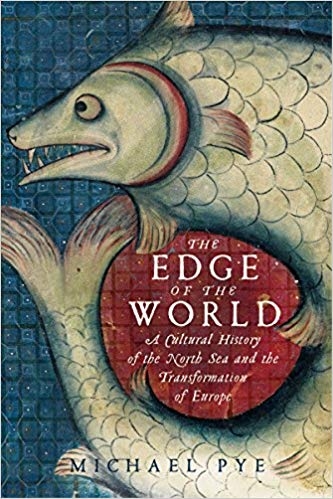 Par suite, si je privilégie l’exemple d’un historien-géographe comme Henning dans ma façon de raisonner en termes géopolitiques, je dois me limiter aux bas pays dans un exposé aussi bref que celui que je vais tenir aujourd’hui à Louvain, car il m’est impossible de parler de tous les pays qu’Henning a étudiés. Le temps qui m’est accordé est de fait limité et mon exposé se bornera à suggérer un certain nombre de pistes que nous devrons, ultérieurement, approfondir tous ensemble. Dans un ouvrage relativement récent de l’historien britannique Michael Pye, The Edge of the World – How the North Sea Made Us Who We Are (Viking/Penguin, London, 2014), nous trouvons, très largement esquissé, un cadre historique précis dans lequel Pye suggère l’émergence d’une histoire culturelle particulière qui se déploie, du moins au tout début de notre histoire, entre l’Islande et Calais et entre le Skagerrak danois/norvégien et les eaux de la Mer Baltique. Pour Pye, c’est en cette région que nait un monde à part, qui entretient certes des contacts, d’abord ténus, avec l’espace méditerranéen tout en restant plutôt autonome dans ses limites intérieures et où Bruges en constitue la plaque tournante méridionale à proximité du Pas-de-Calais. La Flandre médiévale abrite de ce fait le port principal de cette région de la Mer du Nord et de la Baltique qui doit nécessairement entretenir des contacts avec la Normandie, la Bretagne et surtout les côtes atlantiques du nord de l’Espagne, principalement le Pays Basque puis le Portugal, libéré par des croisés venus justement de toutes les régions du pourtours de la Mer du Nord, opération réussie dès le 12ème siècle qui démontre qu’il y avait une visée géopolitique implicite cherchant à étendre l’écoumène nordique à toutes les côtes de l’Atlantique européen. Cette Flandre prospère, pointe avancée vers le sud de cet espace nordique défini par Pye, cherche aussi à ouvrir une voie terrestre entre le Pays Basque et la Catalogne, sur le cours de l’Ebre, voie la plus courte vers les produits de la Méditerranée à une époque où la péninsule ibérique est encore sous contrôle musulman et ne peut être contournée sans danger.
Par suite, si je privilégie l’exemple d’un historien-géographe comme Henning dans ma façon de raisonner en termes géopolitiques, je dois me limiter aux bas pays dans un exposé aussi bref que celui que je vais tenir aujourd’hui à Louvain, car il m’est impossible de parler de tous les pays qu’Henning a étudiés. Le temps qui m’est accordé est de fait limité et mon exposé se bornera à suggérer un certain nombre de pistes que nous devrons, ultérieurement, approfondir tous ensemble. Dans un ouvrage relativement récent de l’historien britannique Michael Pye, The Edge of the World – How the North Sea Made Us Who We Are (Viking/Penguin, London, 2014), nous trouvons, très largement esquissé, un cadre historique précis dans lequel Pye suggère l’émergence d’une histoire culturelle particulière qui se déploie, du moins au tout début de notre histoire, entre l’Islande et Calais et entre le Skagerrak danois/norvégien et les eaux de la Mer Baltique. Pour Pye, c’est en cette région que nait un monde à part, qui entretient certes des contacts, d’abord ténus, avec l’espace méditerranéen tout en restant plutôt autonome dans ses limites intérieures et où Bruges en constitue la plaque tournante méridionale à proximité du Pas-de-Calais. La Flandre médiévale abrite de ce fait le port principal de cette région de la Mer du Nord et de la Baltique qui doit nécessairement entretenir des contacts avec la Normandie, la Bretagne et surtout les côtes atlantiques du nord de l’Espagne, principalement le Pays Basque puis le Portugal, libéré par des croisés venus justement de toutes les régions du pourtours de la Mer du Nord, opération réussie dès le 12ème siècle qui démontre qu’il y avait une visée géopolitique implicite cherchant à étendre l’écoumène nordique à toutes les côtes de l’Atlantique européen. Cette Flandre prospère, pointe avancée vers le sud de cet espace nordique défini par Pye, cherche aussi à ouvrir une voie terrestre entre le Pays Basque et la Catalogne, sur le cours de l’Ebre, voie la plus courte vers les produits de la Méditerranée à une époque où la péninsule ibérique est encore sous contrôle musulman et ne peut être contournée sans danger. 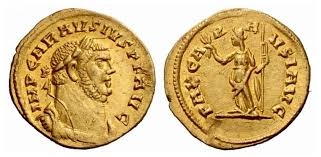
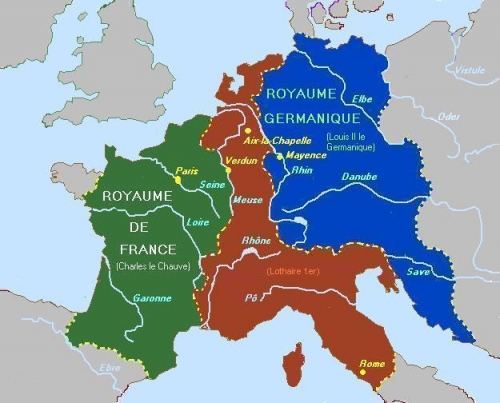
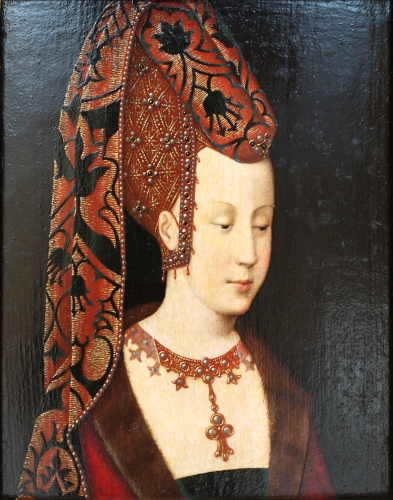 Les ducs de Bourgogne essaieront, par une politique habile, de ressusciter l’Empire de Lothaire mais sans succès. Pour comprendre la dynamique de l’histoire européenne dans nos régions, nous devons donc, aujourd’hui, étudier la géopolitique implicite de ces ducs qui entendaient consolider une alliance avec l’Angleterre et englober la Lorraine et l’Alsace dans leur orbite politique afin de joindre leurs possessions de l’ancienne Basse Lotharingie (« Pays de Par-Deça ») avec celles de l’ancienne Haute Lotharingie et de la Bourgogne (fief français inclus dans la Francie occidentale de Charles le Chauve). Cependant, dans cette étude, nous ne devons surtout pas oublier que la tête pensante de cette géopolitique bourguignonne a été Isabelle de Portugal (ou Isabelle de Bourgogne), épouse de Philippe le Bon et mère de Charles le Hardi (dit le « Téméraire » en France). Isabelle de Portugal était la sœur du Prince Henri, dit « Henri le Navigateur », fils du roi du Portugal et de Philippine de Lancaster, princesse anglaise. Le Prince Henri (1394-1460) a fondé son école maritime, école géopolitique avant la lettre, à Sagres au Portugal, dans le but de créer les conditions requises pour le développement de flottes de haute mer et de mobiliser tous les savoirs pratiques disponibles pour pouvoir, à terme, contourner les empires musulmans et trouver de nouvelles voies vers l’Inde et la Chine. Yves Lacoste, fondateur de la revue Hérodote et pionnier de la redécouverte des théories géopolitiques en France à partir des années 1970, a consacré une bonne part de son livre sur l’histoire de la cartographie à la figure d’Henri le Navigateur et a ainsi démontré que ce prince fut l’impulseur premier de la conquête européenne du monde.
Les ducs de Bourgogne essaieront, par une politique habile, de ressusciter l’Empire de Lothaire mais sans succès. Pour comprendre la dynamique de l’histoire européenne dans nos régions, nous devons donc, aujourd’hui, étudier la géopolitique implicite de ces ducs qui entendaient consolider une alliance avec l’Angleterre et englober la Lorraine et l’Alsace dans leur orbite politique afin de joindre leurs possessions de l’ancienne Basse Lotharingie (« Pays de Par-Deça ») avec celles de l’ancienne Haute Lotharingie et de la Bourgogne (fief français inclus dans la Francie occidentale de Charles le Chauve). Cependant, dans cette étude, nous ne devons surtout pas oublier que la tête pensante de cette géopolitique bourguignonne a été Isabelle de Portugal (ou Isabelle de Bourgogne), épouse de Philippe le Bon et mère de Charles le Hardi (dit le « Téméraire » en France). Isabelle de Portugal était la sœur du Prince Henri, dit « Henri le Navigateur », fils du roi du Portugal et de Philippine de Lancaster, princesse anglaise. Le Prince Henri (1394-1460) a fondé son école maritime, école géopolitique avant la lettre, à Sagres au Portugal, dans le but de créer les conditions requises pour le développement de flottes de haute mer et de mobiliser tous les savoirs pratiques disponibles pour pouvoir, à terme, contourner les empires musulmans et trouver de nouvelles voies vers l’Inde et la Chine. Yves Lacoste, fondateur de la revue Hérodote et pionnier de la redécouverte des théories géopolitiques en France à partir des années 1970, a consacré une bonne part de son livre sur l’histoire de la cartographie à la figure d’Henri le Navigateur et a ainsi démontré que ce prince fut l’impulseur premier de la conquête européenne du monde.  Sous Philippe III d’Espagne, fils de Philippe II que nous n’aimions guère, se déchaîne une véritable guerre mondiale entre les puissances réformées et les puissances catholiques, qui n’eut pas que l’Europe comme théâtre d’opération mais où les affrontements eurent également lieu en Afrique, en Amérique et, ce que l’on oublie généralement, dans les eaux de l’Océan Pacifique, considéré à l’époque comme un « océan espagnol ». Sous le règne de Philippe III, tous les conflits d’ordre géopolitique, tous les conflits nés de la volonté des uns et des autres de maîtriser des sites stratégiques indispensables le long des voies maritimes ont émergé et sont parfois encore virulents aujourd’hui: plusieurs puissances non européennes de nos jours les activent encore régulièrement, notamment dans la Mer de Chine du Sud et entre les Philippines et les côtes de la Chine continentale. Une étude de cette période, dont nous ne nous souvenons plus sauf peut-être l’épisode du siège d’Ostende, s’avère nécessaire pour comprendre la situation géopolitique des bas pays car leurs provinces méridionales faisaient partie, volens nolens, de cet empire espagnol et devinrent, au cours des innombrables affrontements durant le règne de Philippe III et de ses successeurs, ce que les historiens anglais nomment aujourd’hui la fatal avenue, le « corridor fatal », où passaient et s’affrontaient les armées.
Sous Philippe III d’Espagne, fils de Philippe II que nous n’aimions guère, se déchaîne une véritable guerre mondiale entre les puissances réformées et les puissances catholiques, qui n’eut pas que l’Europe comme théâtre d’opération mais où les affrontements eurent également lieu en Afrique, en Amérique et, ce que l’on oublie généralement, dans les eaux de l’Océan Pacifique, considéré à l’époque comme un « océan espagnol ». Sous le règne de Philippe III, tous les conflits d’ordre géopolitique, tous les conflits nés de la volonté des uns et des autres de maîtriser des sites stratégiques indispensables le long des voies maritimes ont émergé et sont parfois encore virulents aujourd’hui: plusieurs puissances non européennes de nos jours les activent encore régulièrement, notamment dans la Mer de Chine du Sud et entre les Philippines et les côtes de la Chine continentale. Une étude de cette période, dont nous ne nous souvenons plus sauf peut-être l’épisode du siège d’Ostende, s’avère nécessaire pour comprendre la situation géopolitique des bas pays car leurs provinces méridionales faisaient partie, volens nolens, de cet empire espagnol et devinrent, au cours des innombrables affrontements durant le règne de Philippe III et de ses successeurs, ce que les historiens anglais nomment aujourd’hui la fatal avenue, le « corridor fatal », où passaient et s’affrontaient les armées.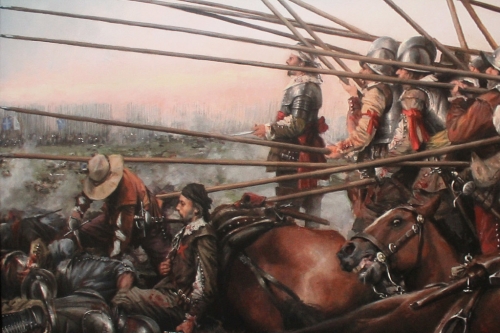
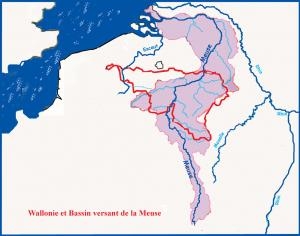 La Meuse est un axe de pénétration géostratégique dans la direction d’Aix-la-Chapelle, capitale symbolique du Saint-Empire : ce qui explique les tentatives répétées de Richelieu pour acheter la neutralité de la Principauté épiscopale de Liège et l’entêtement des Néerlandais du Nord, et plus tard des Prussiens, de conserver la place forte de Maastricht, de la soustraire aux Français ou à une Belgique qui serait inféodée à la France. La brochure de J. Mercier est un survol assez bref de la situation géopolitique des Pays-Bas et, plus particulièrement, de la fatal avenue, que leur portion méridionale allait devenir au cours de l’histoire. Le contenu de cette brochure mériterait d’être étoffé de bon nombre de faits historiques sur la période bourguignonne, sur le régime espagnol du Duc d’Albe à 1713, sur la période autrichienne au 18ème siècle et sur les stratégies défensives au temps des conquêtes de la France révolutionnaire, jusqu’à l’ultime bataille de Waterloo en juin 1815.
La Meuse est un axe de pénétration géostratégique dans la direction d’Aix-la-Chapelle, capitale symbolique du Saint-Empire : ce qui explique les tentatives répétées de Richelieu pour acheter la neutralité de la Principauté épiscopale de Liège et l’entêtement des Néerlandais du Nord, et plus tard des Prussiens, de conserver la place forte de Maastricht, de la soustraire aux Français ou à une Belgique qui serait inféodée à la France. La brochure de J. Mercier est un survol assez bref de la situation géopolitique des Pays-Bas et, plus particulièrement, de la fatal avenue, que leur portion méridionale allait devenir au cours de l’histoire. Le contenu de cette brochure mériterait d’être étoffé de bon nombre de faits historiques sur la période bourguignonne, sur le régime espagnol du Duc d’Albe à 1713, sur la période autrichienne au 18ème siècle et sur les stratégies défensives au temps des conquêtes de la France révolutionnaire, jusqu’à l’ultime bataille de Waterloo en juin 1815.  Immédiatement avant la première guerre mondiale, en 1912, meurt une autre figure importante de la pensée géopolitique concernant nos régions : Homer Lea, auteur de The Day of the Saxon. Lea avait été un élève handicapé de West Point qui avait su maîtriser avec brio toutes les disciplines théoriques de sa célèbre école militaire mais ne pouvait évidemment pas servir sur le terrain, au sein d’un régiment, vu son pied bot. Il fut actif en Chine pour soutenir le mouvement modernisateur de Sun Ya Tsen dans l’espoir de faire éclore une alliance durable entre l’Empire du Milieu, devenu république moderne, et les Etats-Unis. Son livre me parait, à moi comme au stratégiste suisse Jean-Jacques Langendorf, aussi important que le texte de Mackinder où le géographe écossais esquisse la dualité terre/mer et jette les fondements de la géostratégie globale des puissances anglo-saxonnes. Dans The Day of the Saxon, Lea explique comment la Grande-Bretagne et les Etats-Unis doivent, en toutes circonstances, empêcher la Russie de dépasser la ligne Téhéran/Kaboul. L’état actuel de conflictualité diffuse entre la telluricité russe et le thalassocratisme anglo-saxon depuis 1979, qui a commencé dès l’intervention soviétique en Afghanistan, est donc une application du précepte préconisé par Lea dans son livre, puisque l’Armée rouge de Brejnev avait franchi cette ligne fatidique. Pour ce qui concerne les Pays-Bas, les Low Countries, Lea a esquissé, bien avant les coups de feu de Sarajevo, les raisons d’une future guerre anglo-allemande, que Londres, à ses yeux, devait impérativement mener : les côtes de la Hollande, de la Belgique et du Danemark ne peuvent en aucun cas tomber entre les mains des Allemands et les « Saxons » doivent s’apprêter à défendre la France contre l’Allemagne pour que les ports de Dunkerque et de Calais ne soient pas occupés par la Kriegsmarine et pour que les armées du Kaiser ne prennent pas pied en Normandie sur les côtes de la Manche. Il était évident, dès lors, que l’Angleterre allait combattre l’Allemagne si celle-ci violait la neutralité belge ou néerlandaise. Pour la Belgique, une telle violation, en fait, n’avait guère d’importance puisque, de facto, elle faisait partie de la Zollunion allemande, de même que les Pays-Bas. A la limite, elle pouvait récupérer les départements du Nord et du Pas-de-Calais, perdus depuis le 17ème siècle. En revanche, pour le Congo, c’était une autre histoire : le Roi Albert I ne pouvait accepter le transit des troupes allemandes vers la France car, dans ce cas, les Anglais auraient immédiatement occupé le Congo et plus particulièrement le Katanga, tout simplement parce que cette province, riche en mines de cuivre, formait surtout un obstacle territorial au grand projet de Cecil Rhodes, celui de relier le Cap au Caire par une même ligne de communications terrestres. Il y avait aussi un précédent que méditaient les chancelleries : les colonies hollandaises du Cap, de l’Ile Maurice et de Ceylan avaient été envahies et annexées au moment où Napoléon Bonaparte avait transformé les Pays-Bas du Nord en une série de départements français, prétextant que le territoire de la Hollande était français puisqu’il provenait d’alluvions de fleuves français.
Immédiatement avant la première guerre mondiale, en 1912, meurt une autre figure importante de la pensée géopolitique concernant nos régions : Homer Lea, auteur de The Day of the Saxon. Lea avait été un élève handicapé de West Point qui avait su maîtriser avec brio toutes les disciplines théoriques de sa célèbre école militaire mais ne pouvait évidemment pas servir sur le terrain, au sein d’un régiment, vu son pied bot. Il fut actif en Chine pour soutenir le mouvement modernisateur de Sun Ya Tsen dans l’espoir de faire éclore une alliance durable entre l’Empire du Milieu, devenu république moderne, et les Etats-Unis. Son livre me parait, à moi comme au stratégiste suisse Jean-Jacques Langendorf, aussi important que le texte de Mackinder où le géographe écossais esquisse la dualité terre/mer et jette les fondements de la géostratégie globale des puissances anglo-saxonnes. Dans The Day of the Saxon, Lea explique comment la Grande-Bretagne et les Etats-Unis doivent, en toutes circonstances, empêcher la Russie de dépasser la ligne Téhéran/Kaboul. L’état actuel de conflictualité diffuse entre la telluricité russe et le thalassocratisme anglo-saxon depuis 1979, qui a commencé dès l’intervention soviétique en Afghanistan, est donc une application du précepte préconisé par Lea dans son livre, puisque l’Armée rouge de Brejnev avait franchi cette ligne fatidique. Pour ce qui concerne les Pays-Bas, les Low Countries, Lea a esquissé, bien avant les coups de feu de Sarajevo, les raisons d’une future guerre anglo-allemande, que Londres, à ses yeux, devait impérativement mener : les côtes de la Hollande, de la Belgique et du Danemark ne peuvent en aucun cas tomber entre les mains des Allemands et les « Saxons » doivent s’apprêter à défendre la France contre l’Allemagne pour que les ports de Dunkerque et de Calais ne soient pas occupés par la Kriegsmarine et pour que les armées du Kaiser ne prennent pas pied en Normandie sur les côtes de la Manche. Il était évident, dès lors, que l’Angleterre allait combattre l’Allemagne si celle-ci violait la neutralité belge ou néerlandaise. Pour la Belgique, une telle violation, en fait, n’avait guère d’importance puisque, de facto, elle faisait partie de la Zollunion allemande, de même que les Pays-Bas. A la limite, elle pouvait récupérer les départements du Nord et du Pas-de-Calais, perdus depuis le 17ème siècle. En revanche, pour le Congo, c’était une autre histoire : le Roi Albert I ne pouvait accepter le transit des troupes allemandes vers la France car, dans ce cas, les Anglais auraient immédiatement occupé le Congo et plus particulièrement le Katanga, tout simplement parce que cette province, riche en mines de cuivre, formait surtout un obstacle territorial au grand projet de Cecil Rhodes, celui de relier le Cap au Caire par une même ligne de communications terrestres. Il y avait aussi un précédent que méditaient les chancelleries : les colonies hollandaises du Cap, de l’Ile Maurice et de Ceylan avaient été envahies et annexées au moment où Napoléon Bonaparte avait transformé les Pays-Bas du Nord en une série de départements français, prétextant que le territoire de la Hollande était français puisqu’il provenait d’alluvions de fleuves français.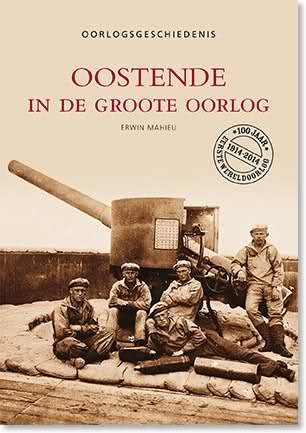 Les Allemands veulent contrôler les côtes de la Mer du Nord et, éventuellement, celles de la Manche ; pendant la première guerre mondiale, ils développent considérablement les infrastructures des ports flamands d’Ostende et de Zeebrugge ; leur objectif est donc de déboucher également dans la Manche pour avoir meilleur accès à l’Amérique. C’était déjà le but de Maximilien de Habsbourg, époux de Marie de Bourgogne, fille de Charles le Hardi dit le Téméraire, à la fin du 15ème siècle, avant même la découverte du Nouveau Monde par Colomb ; Maximilien avait voulu contrôler la Bretagne, excellent tremplin vers l’Amérique, en en épousant la duchesse et en liant cette péninsule armoricaine aux Pays-Bas.
Les Allemands veulent contrôler les côtes de la Mer du Nord et, éventuellement, celles de la Manche ; pendant la première guerre mondiale, ils développent considérablement les infrastructures des ports flamands d’Ostende et de Zeebrugge ; leur objectif est donc de déboucher également dans la Manche pour avoir meilleur accès à l’Amérique. C’était déjà le but de Maximilien de Habsbourg, époux de Marie de Bourgogne, fille de Charles le Hardi dit le Téméraire, à la fin du 15ème siècle, avant même la découverte du Nouveau Monde par Colomb ; Maximilien avait voulu contrôler la Bretagne, excellent tremplin vers l’Amérique, en en épousant la duchesse et en liant cette péninsule armoricaine aux Pays-Bas.

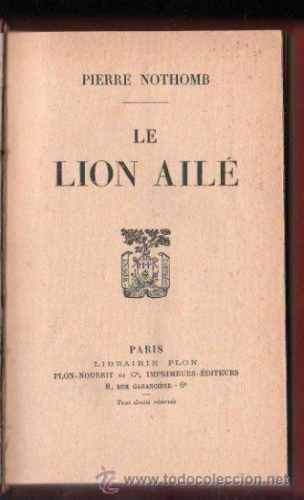

 d crib-note interpretation of O’Brien (“zealous Party leader . . . brutally ugly”), but pray consider: a) Connolly was Orwell’s only acquaintance of note who came close to the novel’s description of O’Brien, physically and socially; b) if you bother to read O’Brien’s monologues in the torture clinic, you see he’s doing a kind of Doc Rockwell routine: lots of fast-talking nonsense about power and punishment, signifying nothing.
d crib-note interpretation of O’Brien (“zealous Party leader . . . brutally ugly”), but pray consider: a) Connolly was Orwell’s only acquaintance of note who came close to the novel’s description of O’Brien, physically and socially; b) if you bother to read O’Brien’s monologues in the torture clinic, you see he’s doing a kind of Doc Rockwell routine: lots of fast-talking nonsense about power and punishment, signifying nothing. A good deal of Nineteen Eighty-Four, in fact, is a twisted retelling of Keep the Aspidistra Flying.
A good deal of Nineteen Eighty-Four, in fact, is a twisted retelling of Keep the Aspidistra Flying.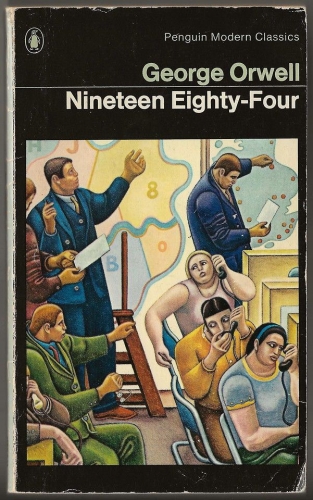 To repeat the obvious, Burnham was describing Communism, not some theoretical “totalitarianism,” as in some press blurbs for Nineteen Eighty-Four. As noted, Orwell explicitly disavowed any connection between his fictional “Party” and the Communist one. Nevertheless, the political program that O’Brien boasts about to Winston Smith is the Communist program à la James Burnham. It’s exaggerated and comically histrionic, but strikes the proper febrile tone.
To repeat the obvious, Burnham was describing Communism, not some theoretical “totalitarianism,” as in some press blurbs for Nineteen Eighty-Four. As noted, Orwell explicitly disavowed any connection between his fictional “Party” and the Communist one. Nevertheless, the political program that O’Brien boasts about to Winston Smith is the Communist program à la James Burnham. It’s exaggerated and comically histrionic, but strikes the proper febrile tone.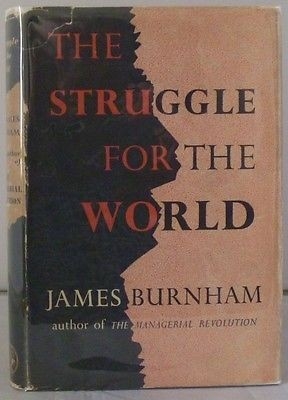 In March 1947, while getting ready to go to Jura and ride the Winston Smith book to the finish even if it killed him (which it did), Orwell wrote his long, penetrating review of The Struggle for the World. He paid some compliments, but also noted some subtle flaws in Burnham’s reasoning. Here he’s talking about Burnham’s willingness to contemplate a preventive war against the USSR:
In March 1947, while getting ready to go to Jura and ride the Winston Smith book to the finish even if it killed him (which it did), Orwell wrote his long, penetrating review of The Struggle for the World. He paid some compliments, but also noted some subtle flaws in Burnham’s reasoning. Here he’s talking about Burnham’s willingness to contemplate a preventive war against the USSR: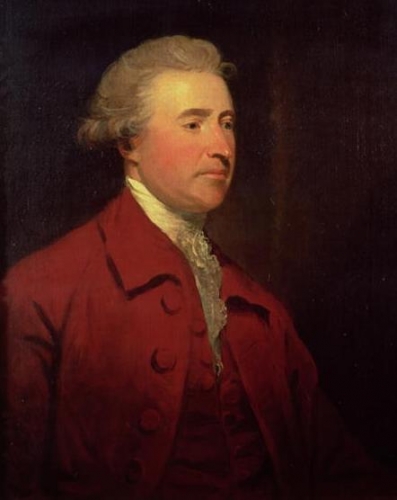
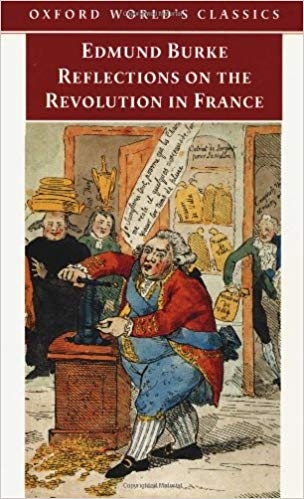 Mais en 89 Burke sent que cette fois la France ne se relèvera pas. Il en donne les raisons, avant Chateaubriand, Tocqueville, Balzac ou Bernanos :
Mais en 89 Burke sent que cette fois la France ne se relèvera pas. Il en donne les raisons, avant Chateaubriand, Tocqueville, Balzac ou Bernanos : 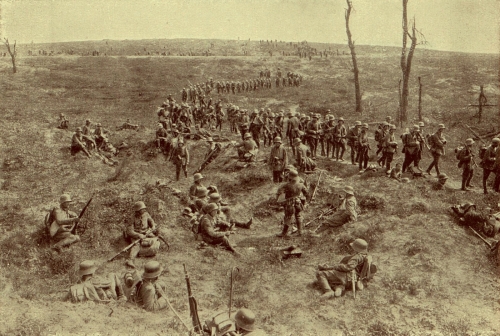
 In the preface to his translation of Saint-John Perse’s Anabasis (1949), T.S. Eliot explained that some gifted writers are “able to write poetry in what is called prose.” That is what Jünger did in virtually all of his writings, especially here. Strahlungen is essentially a long prose poem, brimming with symbols, ideas, insights, and searing, unforgettable images. The Argentinian poet Jorge Luis Borges wrote in Gold of the Tigers (1977), “For a true poet, every moment of existence, every act, ought to be poetic since, in essence, it is so.” Jünger understood that. Likewise, Borges wrote in The Cipher (1981) that “the intellect (wakefulness) thinks by means of abstractions; poetry (dream) by means of images, myths, or fables. Intellectual poetry should pleasingly interweave these two processes.”
In the preface to his translation of Saint-John Perse’s Anabasis (1949), T.S. Eliot explained that some gifted writers are “able to write poetry in what is called prose.” That is what Jünger did in virtually all of his writings, especially here. Strahlungen is essentially a long prose poem, brimming with symbols, ideas, insights, and searing, unforgettable images. The Argentinian poet Jorge Luis Borges wrote in Gold of the Tigers (1977), “For a true poet, every moment of existence, every act, ought to be poetic since, in essence, it is so.” Jünger understood that. Likewise, Borges wrote in The Cipher (1981) that “the intellect (wakefulness) thinks by means of abstractions; poetry (dream) by means of images, myths, or fables. Intellectual poetry should pleasingly interweave these two processes.” 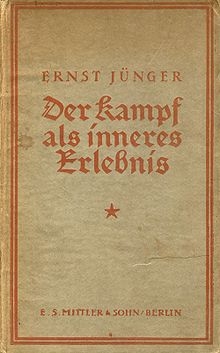 Jünger considered the National Socialists to be a shallow and savage version of the conservative nationalism that he supported in the 1920’s. In the journals, he refers to Hitler under the pseudonym “Kniebolo,” meaning roughly “kneel to the devil,” because he believed the man was under demonic influence. In late 1943 he wrote, “When I compare the legitimate claims of our Fatherland with what has occurred at his hands, I am overcome with infinite sadness.”
Jünger considered the National Socialists to be a shallow and savage version of the conservative nationalism that he supported in the 1920’s. In the journals, he refers to Hitler under the pseudonym “Kniebolo,” meaning roughly “kneel to the devil,” because he believed the man was under demonic influence. In late 1943 he wrote, “When I compare the legitimate claims of our Fatherland with what has occurred at his hands, I am overcome with infinite sadness.”

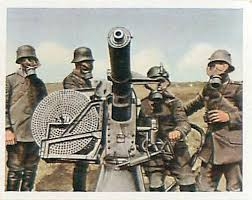

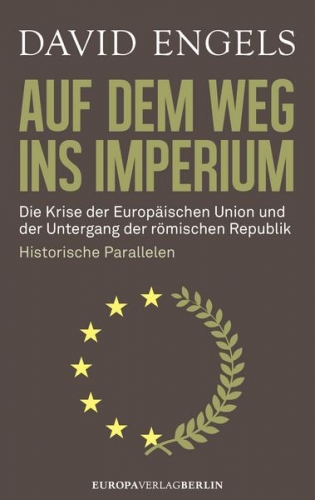 Prof. Engels: Sehr einfach: Die EU glaubt, sich von der historischen Identität des Abendlands abwenden zu können und den (wiederum letztlich typisch christlich verankerten) Wunsch nach Selbstüberwindung und Selbstkritik so pervertiert überziehen zu können, daß sie ganz auf eine historische Fundamentierung ihrer Identität verzichtet und gewissermaßen in Erwartung künftiger Weltverbrüderung schon jetzt auf dem europäischen Kontinent einen universalistischen, multikulturellen, rein humanistisch und somit relativistisch fundierten Weltstaat aufbaut. Das ist in etwa so klug, als schneide man einer Pflanze die Wurzeln ab, damit ihre Bodenhaftung sie nicht am Wachstum hindere – und ebenso selbstzerstörerisch, denn das europäische Projekt kann sich über kurz oder lang nur in einen materialistischen, zynischen und hedonistischen Alptraum wandeln, wenn die „Werte“, auf denen es basiert, rein positivistisch gesetzt und somit beliebig interpretier- und manipulierbar sind, da ihnen jeglicher absoluter, sei es transzendentaler, sei es traditionaler Bezugspunkt fehlt.
Prof. Engels: Sehr einfach: Die EU glaubt, sich von der historischen Identität des Abendlands abwenden zu können und den (wiederum letztlich typisch christlich verankerten) Wunsch nach Selbstüberwindung und Selbstkritik so pervertiert überziehen zu können, daß sie ganz auf eine historische Fundamentierung ihrer Identität verzichtet und gewissermaßen in Erwartung künftiger Weltverbrüderung schon jetzt auf dem europäischen Kontinent einen universalistischen, multikulturellen, rein humanistisch und somit relativistisch fundierten Weltstaat aufbaut. Das ist in etwa so klug, als schneide man einer Pflanze die Wurzeln ab, damit ihre Bodenhaftung sie nicht am Wachstum hindere – und ebenso selbstzerstörerisch, denn das europäische Projekt kann sich über kurz oder lang nur in einen materialistischen, zynischen und hedonistischen Alptraum wandeln, wenn die „Werte“, auf denen es basiert, rein positivistisch gesetzt und somit beliebig interpretier- und manipulierbar sind, da ihnen jeglicher absoluter, sei es transzendentaler, sei es traditionaler Bezugspunkt fehlt.
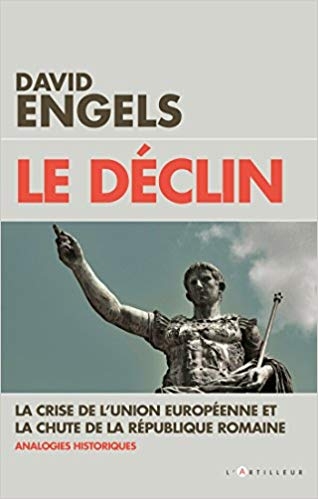
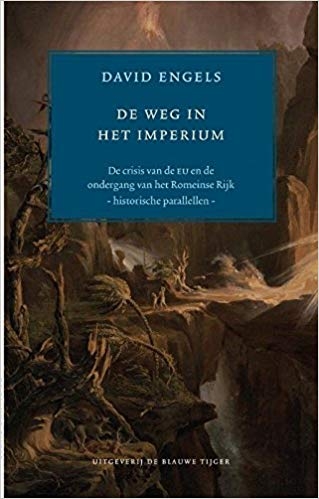 Freie Welt: Was kann in Ihren Augen der einzelne Bürger heutzutage noch bewirken?
Freie Welt: Was kann in Ihren Augen der einzelne Bürger heutzutage noch bewirken?

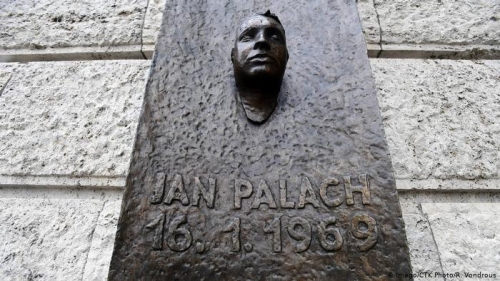
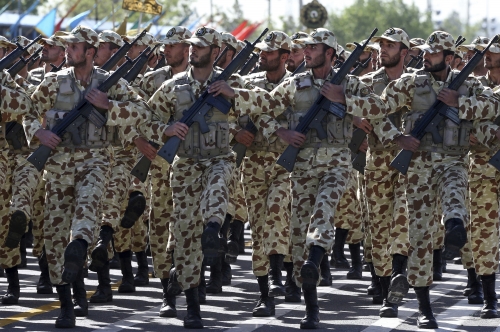
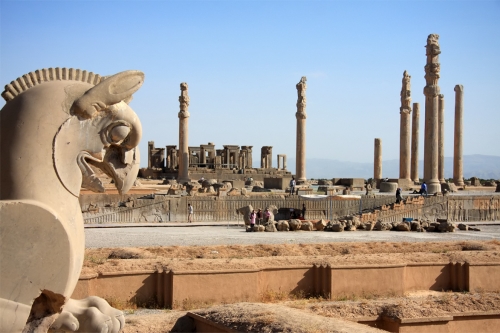



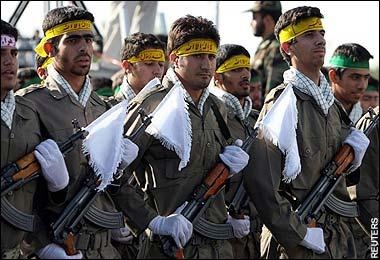
 Il y a encore en Iran aujourd’hui des religieux supposément chiites qui doivent plus à Sohrawardi, à travers Mullah Sadra, qu’à l’enseignement réel de l’Imam Ali. A l’époque du Sixième Imam, Jaafar al-Sadiq, la foi chiite fut cooptée par les partisans iraniens luttant contre me Califat sunnite. Le genre de doctrine chiite que certains des collègues de l’Ayatollah Khomeiny tentèrent d’imposer à l’Iran en 1979 représenta une reconstruction radicale du premier chiisme arabe, pas le genre d’ésotérisme chiite qui donna naissance à la dynastie safavide. Cette dernière permit à l’Iran de resurgir en tant qu’Etat politique distinct séparé et opposé au Califat Ottoman sunnite et à un Empire Moghol qui était aussi tombé dans le fondamentalisme islamique après que la littérature et la philosophie persisées d’Akbar se soient révélées être un rempart insuffisant contre celui-ci. Certains de ces chiites persisés sont présents aux plus hauts niveaux dans la structure de pouvoir de la République Islamique. Ils doivent être accueillis dans la communauté du nationalisme iranien, et même dans la communauté de la Renaissance Iranienne.
Il y a encore en Iran aujourd’hui des religieux supposément chiites qui doivent plus à Sohrawardi, à travers Mullah Sadra, qu’à l’enseignement réel de l’Imam Ali. A l’époque du Sixième Imam, Jaafar al-Sadiq, la foi chiite fut cooptée par les partisans iraniens luttant contre me Califat sunnite. Le genre de doctrine chiite que certains des collègues de l’Ayatollah Khomeiny tentèrent d’imposer à l’Iran en 1979 représenta une reconstruction radicale du premier chiisme arabe, pas le genre d’ésotérisme chiite qui donna naissance à la dynastie safavide. Cette dernière permit à l’Iran de resurgir en tant qu’Etat politique distinct séparé et opposé au Califat Ottoman sunnite et à un Empire Moghol qui était aussi tombé dans le fondamentalisme islamique après que la littérature et la philosophie persisées d’Akbar se soient révélées être un rempart insuffisant contre celui-ci. Certains de ces chiites persisés sont présents aux plus hauts niveaux dans la structure de pouvoir de la République Islamique. Ils doivent être accueillis dans la communauté du nationalisme iranien, et même dans la communauté de la Renaissance Iranienne.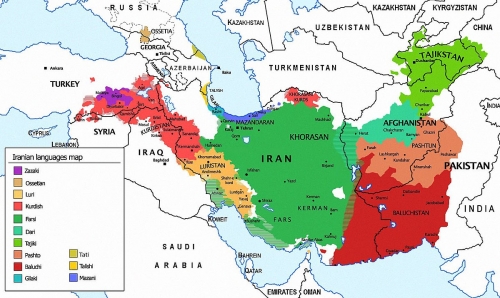
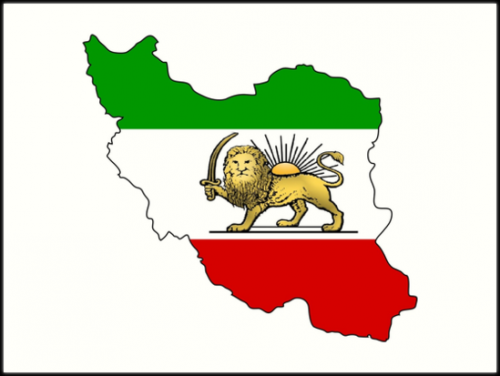

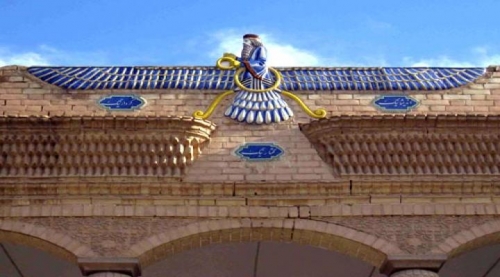
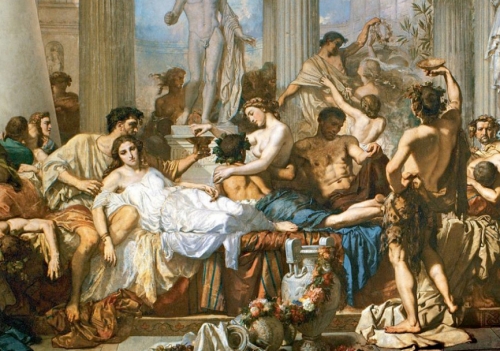
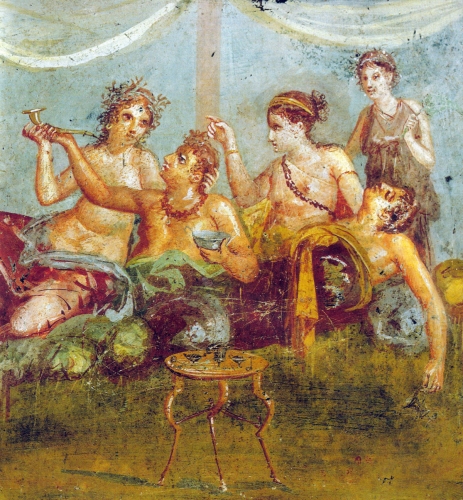
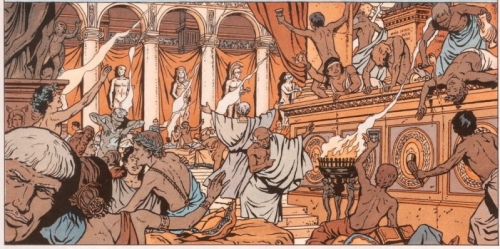
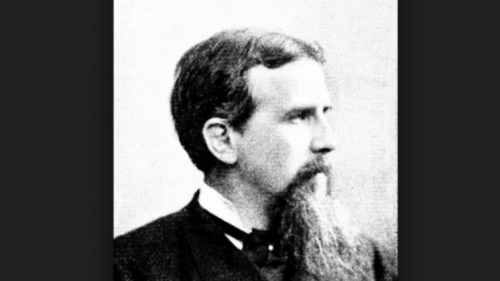
 It is clearly visible that from such an organic approach, Ratzel understood territorial expansion to be a natural, living process, similar to the growth of living organisms.
It is clearly visible that from such an organic approach, Ratzel understood territorial expansion to be a natural, living process, similar to the growth of living organisms. 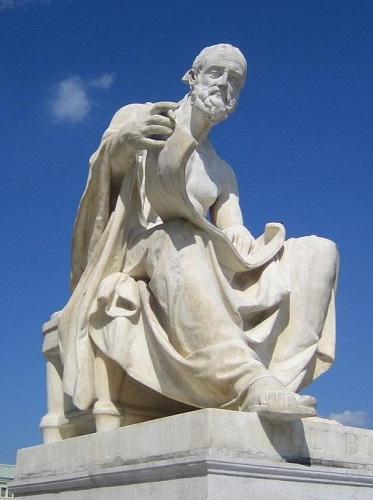

 It is this particular intellectual predisposition toward the synoptic, along with its acceptance of nuance, multicausality and complexity, that has rendered Polybius such an appealing figure over the centuries for theorists of statesmanship and grand strategy. Indeed, in his
It is this particular intellectual predisposition toward the synoptic, along with its acceptance of nuance, multicausality and complexity, that has rendered Polybius such an appealing figure over the centuries for theorists of statesmanship and grand strategy. Indeed, in his 




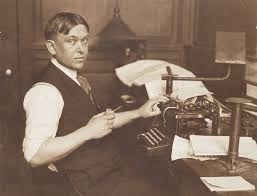
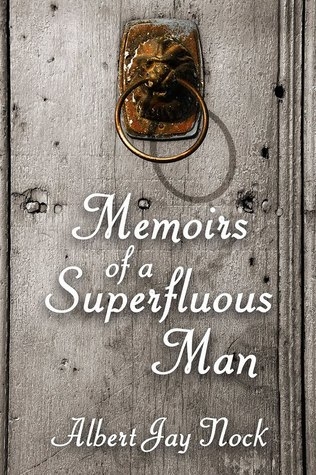 It may be Nock’s “
It may be Nock’s “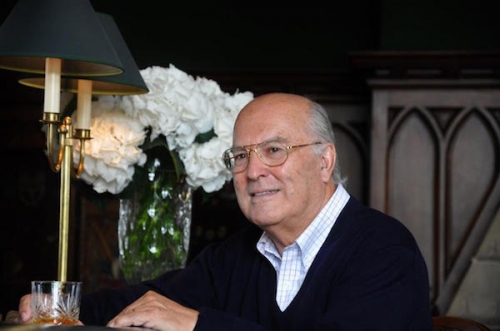
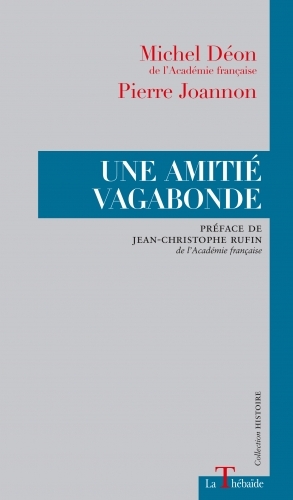 - Pierre Joannon : Navré de vous décevoir ! Aucune goutte de sang irlandais ne coulait dans mes veines jusqu’à une date récente. En 1997, le Taoiseach(Premier ministre) de l’époque a dû sans doute estimer qu’il y avait là une lacune à combler, et il me fit octroyer la nationalité irlandaise, une reconnaissance dont je ne suis pas peu fier. On peut en tirer deux observations : que l’Irlande sait reconnaître les siens, et qu’on peut choisir ses racines au lieu de se contenter de les recevoir en héritage ! D’où me vient cette passion pour l’Irlande ? D’un voyage fortuit effectué au début des années soixante. J’ai eu le coup de foudre pour les paysages du Kerry et du Connemara qui correspondaient si exactement au pays rêvé que chacun porte en soi sans toujours avoir la chance de le rencontrer. Et le méditerranéen que je suis fut immédiatement séduit par ce peuple de conteurs disert, roublard et émouvant, prompt à passer du rire aux larmes avec un bonheur d’expression qui a disparu dans nos sociétés dites évoluées. L’histoire de cette île venait à point nommé répondre à certaines interrogations qui étaient les miennes au lendemain de la débâcle algérienne. Je me mis à lire tous les ouvrages qui me tombaient sous la main, tant en français qu’en anglais. Etudiant en droit, je consacrais ma thèse de doctorat d’Etat à la constitution de l’Etat Libre d’Irlande de 1922 et à la constitution de l’Eire concoctée par Eamon de Valera en 1937. Un premier livre sur l’Irlande, paru aux Editions Plon grâce à l’appui bienveillant de Marcel Jullian, me valut une distinction de l’Académie Française. A quelques temps de là, le professeur Patrick Rafroidi qui avait créé au sein de l’Université de Lille un Centre d’études et de recherches irlandaise unique en France, m’offrit de diriger avec lui la revue universitaire Etudes Irlandaises. En acceptant, je ne me doutais guère que j’en assumerai les fonctions de corédacteur en chef pendant vingt-huit ans. Je publiais, dans le même temps plusieurs ouvrages sur le nationalisme irlandais, sur le débarquement des Français dans le comté de Mayo en 1798, sur de Gaulle et ses rapports avec l’Irlande dont étaient originaires ses ancêtres Mac Cartan, sur Michael Collins et la guerre d’indépendance anglo-irlandaise de 1919-1921, sur John Hume et l’évolution du processus de paix nord-irlandais. J’organisais également plusieurs colloques sur la Verte Erin à la Sorbonne, au Collège de France, à l’UNESCO, à l’Académie de la Paix et de la Sécurité Internationale et à l’Université de Nice. Enfin, en 1989, je pris l’initiative de créer la branche française de la Confédération des Ireland Funds, la plus importante organisation internationale non gouvernementale d’aide à l’Irlande réunissant à travers le monde Irlandais de souche, Irlandais de la diaspora et amis de l’Irlande. Vecteur privilégié de l’amitié entre nos deux pays, l’Ireland Fund de France que je préside distribue des bourses à des étudiants des deux pays, subventionne des manifestations culturelles d’intérêt commun et participe activement à l’essor des relations bilatérales dans tous les domaines. Ainsi que vous pouvez le constater, l’Irlande a fait boule de neige dans ma vie, sans que cela ait été le moins du monde prémédité. Le hasard fait parfois bien les choses.
- Pierre Joannon : Navré de vous décevoir ! Aucune goutte de sang irlandais ne coulait dans mes veines jusqu’à une date récente. En 1997, le Taoiseach(Premier ministre) de l’époque a dû sans doute estimer qu’il y avait là une lacune à combler, et il me fit octroyer la nationalité irlandaise, une reconnaissance dont je ne suis pas peu fier. On peut en tirer deux observations : que l’Irlande sait reconnaître les siens, et qu’on peut choisir ses racines au lieu de se contenter de les recevoir en héritage ! D’où me vient cette passion pour l’Irlande ? D’un voyage fortuit effectué au début des années soixante. J’ai eu le coup de foudre pour les paysages du Kerry et du Connemara qui correspondaient si exactement au pays rêvé que chacun porte en soi sans toujours avoir la chance de le rencontrer. Et le méditerranéen que je suis fut immédiatement séduit par ce peuple de conteurs disert, roublard et émouvant, prompt à passer du rire aux larmes avec un bonheur d’expression qui a disparu dans nos sociétés dites évoluées. L’histoire de cette île venait à point nommé répondre à certaines interrogations qui étaient les miennes au lendemain de la débâcle algérienne. Je me mis à lire tous les ouvrages qui me tombaient sous la main, tant en français qu’en anglais. Etudiant en droit, je consacrais ma thèse de doctorat d’Etat à la constitution de l’Etat Libre d’Irlande de 1922 et à la constitution de l’Eire concoctée par Eamon de Valera en 1937. Un premier livre sur l’Irlande, paru aux Editions Plon grâce à l’appui bienveillant de Marcel Jullian, me valut une distinction de l’Académie Française. A quelques temps de là, le professeur Patrick Rafroidi qui avait créé au sein de l’Université de Lille un Centre d’études et de recherches irlandaise unique en France, m’offrit de diriger avec lui la revue universitaire Etudes Irlandaises. En acceptant, je ne me doutais guère que j’en assumerai les fonctions de corédacteur en chef pendant vingt-huit ans. Je publiais, dans le même temps plusieurs ouvrages sur le nationalisme irlandais, sur le débarquement des Français dans le comté de Mayo en 1798, sur de Gaulle et ses rapports avec l’Irlande dont étaient originaires ses ancêtres Mac Cartan, sur Michael Collins et la guerre d’indépendance anglo-irlandaise de 1919-1921, sur John Hume et l’évolution du processus de paix nord-irlandais. J’organisais également plusieurs colloques sur la Verte Erin à la Sorbonne, au Collège de France, à l’UNESCO, à l’Académie de la Paix et de la Sécurité Internationale et à l’Université de Nice. Enfin, en 1989, je pris l’initiative de créer la branche française de la Confédération des Ireland Funds, la plus importante organisation internationale non gouvernementale d’aide à l’Irlande réunissant à travers le monde Irlandais de souche, Irlandais de la diaspora et amis de l’Irlande. Vecteur privilégié de l’amitié entre nos deux pays, l’Ireland Fund de France que je préside distribue des bourses à des étudiants des deux pays, subventionne des manifestations culturelles d’intérêt commun et participe activement à l’essor des relations bilatérales dans tous les domaines. Ainsi que vous pouvez le constater, l’Irlande a fait boule de neige dans ma vie, sans que cela ait été le moins du monde prémédité. Le hasard fait parfois bien les choses. - C. G. :
- C. G. :  - P. J. : Je suis bien en peine de vous répondre. Il existe tant de figures attachantes ou admirables : Parnell, Michael Collins, de Valera, John Hume aujourd’hui. Peut-être ai-je une prédilection pour Theobald Wolfe Tone, ce jeune avocat protestant qui fut, au dix-huitième siècle, « l’inventeur » du nationalisme irlandais après avoir échoué à intéresser les Anglais à un fumeux projet de colonisation. Il voulait émanciper les catholiques, mobiliser les protestants, liquider les dissensions religieuses au profit d’une conception éclairée de la citoyenneté, briser les liens de sujétion à l’Angleterre. Artisan de l’alliance franco-irlandaise il a laissé un merveilleux journal narrant ses aventures et ses intrigues dans le Paris du Directoire. On y découvre un jeune homme curieux, gai, aimant les femmes et le bon vin, fasciné par le théâtre et les défilés militaires, enthousiasmé par Hoche et beaucoup moins par Bonaparte. Capturé par les Anglais à la suite du piteux échec d’une tentative de débarquement français en Irlande, il sollicita de la cour martiale qui le jugeait la faveur d’être passé par les armes « pour avoir eu l’honneur de porter l’uniforme français ». Elle lui fut refusée : il fut condamné au gibet. La veille de l’exécution, il se trancha la gorge avec un canif et agonisa toute une semaine avant d’expirer le 19 novembre 1798.
- P. J. : Je suis bien en peine de vous répondre. Il existe tant de figures attachantes ou admirables : Parnell, Michael Collins, de Valera, John Hume aujourd’hui. Peut-être ai-je une prédilection pour Theobald Wolfe Tone, ce jeune avocat protestant qui fut, au dix-huitième siècle, « l’inventeur » du nationalisme irlandais après avoir échoué à intéresser les Anglais à un fumeux projet de colonisation. Il voulait émanciper les catholiques, mobiliser les protestants, liquider les dissensions religieuses au profit d’une conception éclairée de la citoyenneté, briser les liens de sujétion à l’Angleterre. Artisan de l’alliance franco-irlandaise il a laissé un merveilleux journal narrant ses aventures et ses intrigues dans le Paris du Directoire. On y découvre un jeune homme curieux, gai, aimant les femmes et le bon vin, fasciné par le théâtre et les défilés militaires, enthousiasmé par Hoche et beaucoup moins par Bonaparte. Capturé par les Anglais à la suite du piteux échec d’une tentative de débarquement français en Irlande, il sollicita de la cour martiale qui le jugeait la faveur d’être passé par les armes « pour avoir eu l’honneur de porter l’uniforme français ». Elle lui fut refusée : il fut condamné au gibet. La veille de l’exécution, il se trancha la gorge avec un canif et agonisa toute une semaine avant d’expirer le 19 novembre 1798.
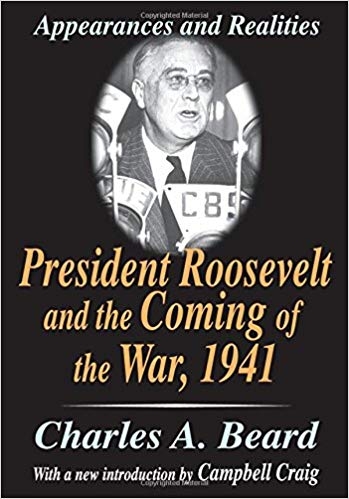 My own judgment is that Roosevelt was right: U.S. entry into what became enshrined as World War II was indeed necessary. Yet by no stretch of the imagination does the result qualify as a “Good War.” And here is where Beard’s critique retains relevance.
My own judgment is that Roosevelt was right: U.S. entry into what became enshrined as World War II was indeed necessary. Yet by no stretch of the imagination does the result qualify as a “Good War.” And here is where Beard’s critique retains relevance.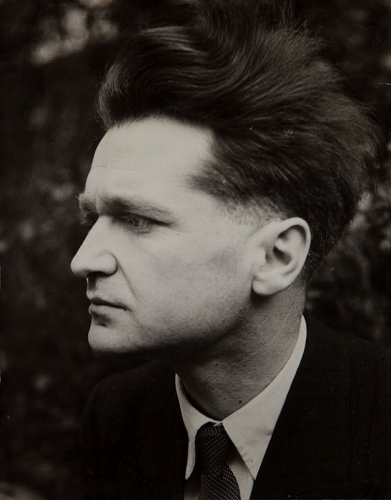
 Emil Cioran
Emil Cioran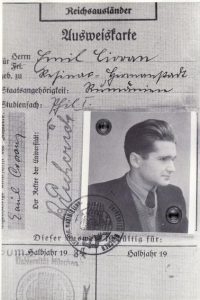 A rare and stimulating combination in Cioran’s writings: unsentimental observation and intense pathos.
A rare and stimulating combination in Cioran’s writings: unsentimental observation and intense pathos.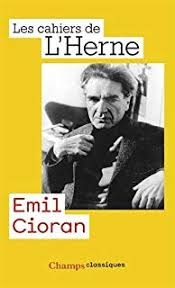 But fascism cannot work miracles. Politics must work with the human material and historical trajectory that one has. That is being true to oneself. To wish for total transformation and the tabula rasa is to invite disaster. Such revolutions are generally an exercise in self-harm. Once the passions and intoxications have settled, one finds the nation stunted and lessened: by civil war, by tyranny, by self-mutilation and deformation in the stubborn in the name of utopian goals. The historic gap with the ‘advanced’ nations is widened further still by the ordeal.
But fascism cannot work miracles. Politics must work with the human material and historical trajectory that one has. That is being true to oneself. To wish for total transformation and the tabula rasa is to invite disaster. Such revolutions are generally an exercise in self-harm. Once the passions and intoxications have settled, one finds the nation stunted and lessened: by civil war, by tyranny, by self-mutilation and deformation in the stubborn in the name of utopian goals. The historic gap with the ‘advanced’ nations is widened further still by the ordeal.
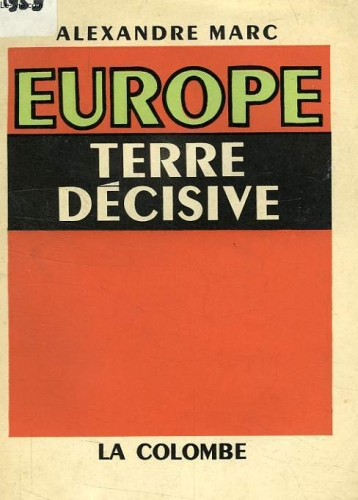 Principale figure du non-conformisme européen tant dans les années 1930 qu’après-guerre, Alexandre Marc naît en 1904 à Odessa dans l’Empire russe au sein d’une famille juive. Alexandre-Marc Lipiansky et ses parents fuient la Révolution de 1917 et s’installent à Paris. Étudiant à Iéna en Allemagne, il s’intéresse à la philosophie, puis rentre en France et y suit des cours de droit et de sciences politiques. Il participe aussi à un groupe socialiste libertaire étudiant.
Principale figure du non-conformisme européen tant dans les années 1930 qu’après-guerre, Alexandre Marc naît en 1904 à Odessa dans l’Empire russe au sein d’une famille juive. Alexandre-Marc Lipiansky et ses parents fuient la Révolution de 1917 et s’installent à Paris. Étudiant à Iéna en Allemagne, il s’intéresse à la philosophie, puis rentre en France et y suit des cours de droit et de sciences politiques. Il participe aussi à un groupe socialiste libertaire étudiant. 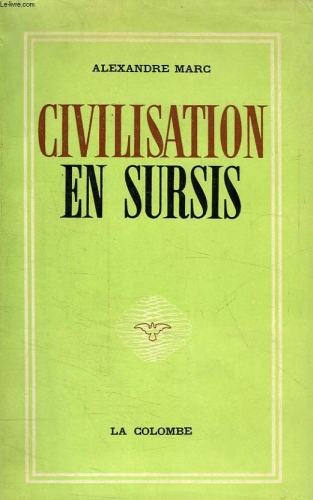 En contact étroit avec la revue réaliste Plans de Philippe Lamour, issue de la « galaxie » Georges Valois et des tentatives maladroites de fascisme à la française, Alexandre Marc se lie d’une part avec le pacifiste allemand francophile Otto Abetz, futur ambassadeur allemand à Paris sous l’Occupation, et, d’autre part, avec la revue nationale-bolchevique Der Gegner (« L’Opposant ») de Harro Schulze-Boysen. Il discute aussi avec Thierry Maulnier de la « Jeune Droite ». Auteur d’essais sur Pierre-Joseph Proudhon et Charles Péguy, Alexandre Marc s’oppose au nom du fédéralisme intégral à l’État-nation et nie la pertinence du clivage politicien gauche – droite.
En contact étroit avec la revue réaliste Plans de Philippe Lamour, issue de la « galaxie » Georges Valois et des tentatives maladroites de fascisme à la française, Alexandre Marc se lie d’une part avec le pacifiste allemand francophile Otto Abetz, futur ambassadeur allemand à Paris sous l’Occupation, et, d’autre part, avec la revue nationale-bolchevique Der Gegner (« L’Opposant ») de Harro Schulze-Boysen. Il discute aussi avec Thierry Maulnier de la « Jeune Droite ». Auteur d’essais sur Pierre-Joseph Proudhon et Charles Péguy, Alexandre Marc s’oppose au nom du fédéralisme intégral à l’État-nation et nie la pertinence du clivage politicien gauche – droite.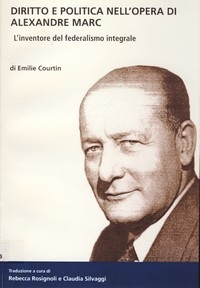 Comme de nombreux fédéralistes européens après 1945, il refuse l’« Europe forteresse » défendue par Maurice Bardèche et conçoit à l’époque – il sera plus réaliste au soir de sa vie – la fédération européenne comme la dernière étape vers une fédération mondiale, ce qui est proprement impolitique. Ce penseur personnaliste estime dans Fondements du fédéralisme. Destin de l’homme à venir (L’Harmattan, 1997) que « les antagonismes peuvent être féconds (p. 28) ». Soit ! Son fédéralisme ne se cantonne pas à la seule politique; elle a d’évidentes implications socio-économiques. À la fois hostiles au libéralisme, à l’étatisme et au collectivisme, « les fédéralistes, note-t-il, veulent une entreprise réellement libre, composée d’hommes libres, et fonctionnant avec un marché véritablement libéré, c’est-à-dire – pour reprendre […] la terminologie péguyiste – affranchie du joug et de l’Argent-Roi et de l’État-Moloch (p. 143) ». Ainsi propose-t-il la planification économique dans un cadre concurrentiel et l’auto-gestion en entreprise. Il se tait en revanche sur l’intéressement, l’association Capital – Travail et la participation, trois thèmes majeurs du gaullisme qu’Alexandre Marc soupçonnait de « néo-nationalisme » étriqué.
Comme de nombreux fédéralistes européens après 1945, il refuse l’« Europe forteresse » défendue par Maurice Bardèche et conçoit à l’époque – il sera plus réaliste au soir de sa vie – la fédération européenne comme la dernière étape vers une fédération mondiale, ce qui est proprement impolitique. Ce penseur personnaliste estime dans Fondements du fédéralisme. Destin de l’homme à venir (L’Harmattan, 1997) que « les antagonismes peuvent être féconds (p. 28) ». Soit ! Son fédéralisme ne se cantonne pas à la seule politique; elle a d’évidentes implications socio-économiques. À la fois hostiles au libéralisme, à l’étatisme et au collectivisme, « les fédéralistes, note-t-il, veulent une entreprise réellement libre, composée d’hommes libres, et fonctionnant avec un marché véritablement libéré, c’est-à-dire – pour reprendre […] la terminologie péguyiste – affranchie du joug et de l’Argent-Roi et de l’État-Moloch (p. 143) ». Ainsi propose-t-il la planification économique dans un cadre concurrentiel et l’auto-gestion en entreprise. Il se tait en revanche sur l’intéressement, l’association Capital – Travail et la participation, trois thèmes majeurs du gaullisme qu’Alexandre Marc soupçonnait de « néo-nationalisme » étriqué.
 René Girard a parlé de l’Amérique comme puissance mimétique. Sur cette planète de crétins en effet tout le monde veut devenir américain, y compris quand il s’agit de payer des études à quarante mille euros/an, des opérations à 200 000 euros, de devenir obèse et même abruti par la consommation de médias et d’opiacés...
René Girard a parlé de l’Amérique comme puissance mimétique. Sur cette planète de crétins en effet tout le monde veut devenir américain, y compris quand il s’agit de payer des études à quarante mille euros/an, des opérations à 200 000 euros, de devenir obèse et même abruti par la consommation de médias et d’opiacés...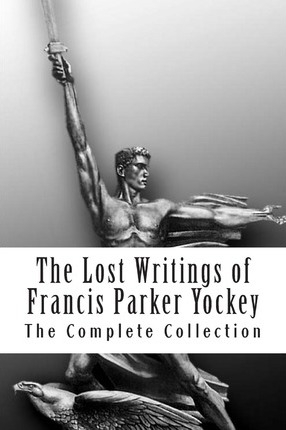 Le cinéaste Tim Burton a bien moqué ce comportement homogénéisé/industriel dans plusieurs de ses films, par exemple Edouard aux mains d’argent. Kazan avait fait de même dans l’Arrangement. Aujourd’hui ce comportement monolithique/industriel s’applique à l’humanitaire, à la déviance, à la marginalité, au transsexualisme, au tatouage, au piercing, etc.
Le cinéaste Tim Burton a bien moqué ce comportement homogénéisé/industriel dans plusieurs de ses films, par exemple Edouard aux mains d’argent. Kazan avait fait de même dans l’Arrangement. Aujourd’hui ce comportement monolithique/industriel s’applique à l’humanitaire, à la déviance, à la marginalité, au transsexualisme, au tatouage, au piercing, etc.  La musique est rarement entendue en Amérique, ayant été remplacée par le battement de tambour sans culture du noir. Comme le dit un musicologue américain: «Le rythme du jazz, tiré de tribus sauvages, est à la fois raffiné et élémentaire et correspond aux dispositions de notre âme moderne. Cela nous excite sans répit, comme le battement de tambour primitif du danseur de la prière. Mais il ne s'arrête pas là. Il doit en même temps tenir compte de l'excitabilité de la psyché moderne. Nous avons soif de stimuli rapides, excitants et en constante évolution. La musique est un excellent moyen d’excitation, syncopé, qui a fait ses preuves. »
La musique est rarement entendue en Amérique, ayant été remplacée par le battement de tambour sans culture du noir. Comme le dit un musicologue américain: «Le rythme du jazz, tiré de tribus sauvages, est à la fois raffiné et élémentaire et correspond aux dispositions de notre âme moderne. Cela nous excite sans répit, comme le battement de tambour primitif du danseur de la prière. Mais il ne s'arrête pas là. Il doit en même temps tenir compte de l'excitabilité de la psyché moderne. Nous avons soif de stimuli rapides, excitants et en constante évolution. La musique est un excellent moyen d’excitation, syncopé, qui a fait ses preuves. »
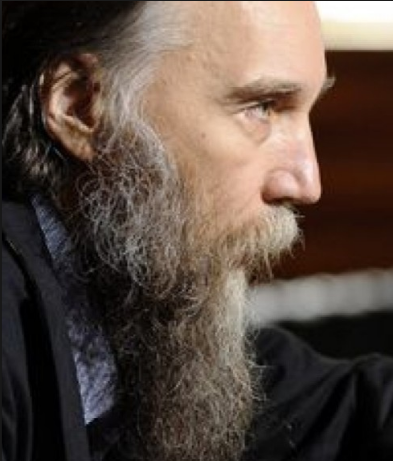 - L’approche évaluative (A. Dugin, S. Kiselyov, L. Ivashov). Ses représentants adoptent la base du système évaluatif. Cette approche est la plus commune. Cette position est typique d’A. Dugin. Pour lui, la civilisation est une vaste et stable région géographique et culturelle, unie par des valeurs spirituelles, des attitudes stylistiques et psychologiques et une expérience historique communes. La plupart de ces régions coïncident avec les frontières de la diffusion des grandes religions mondiales. La structure de la civilisation peut inclure plusieurs Etats, mais il y a des cas où les frontières des civilisations traversent des Etats particuliers, les divisant en plusieurs parties [1].
- L’approche évaluative (A. Dugin, S. Kiselyov, L. Ivashov). Ses représentants adoptent la base du système évaluatif. Cette approche est la plus commune. Cette position est typique d’A. Dugin. Pour lui, la civilisation est une vaste et stable région géographique et culturelle, unie par des valeurs spirituelles, des attitudes stylistiques et psychologiques et une expérience historique communes. La plupart de ces régions coïncident avec les frontières de la diffusion des grandes religions mondiales. La structure de la civilisation peut inclure plusieurs Etats, mais il y a des cas où les frontières des civilisations traversent des Etats particuliers, les divisant en plusieurs parties [1].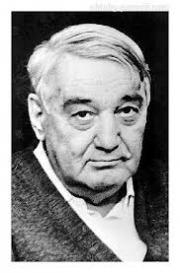 Gumilev comprend l’ethnicité comme un groupe humain stable, naturellement formé, s’opposant à tous les autres groupes similaires, qui est déterminé par un sens de la complémentarité, et un genre différent de comportement stéréotypé, qui change régulièrement dans le temps historique [5].
Gumilev comprend l’ethnicité comme un groupe humain stable, naturellement formé, s’opposant à tous les autres groupes similaires, qui est déterminé par un sens de la complémentarité, et un genre différent de comportement stéréotypé, qui change régulièrement dans le temps historique [5].

